General Insurance Blogs, Articles & Updates by - Magma HDI
Have us call you
- RENEW YOUR POLICY
- BUY NEW POLICY

Six practical gifts for any parent they would love
Parenting is tough, but buying an ideal gift for your parents might be even more challenging. What would you gift the people who gave you everything? Is there even a perfect gift for parents? The finest presents are ones that celebrate their hard work and provide them with a much-needed break from daily life. These gift choices are guaranteed to be a success.
Even a tiny present may be a polite way to express your love and gratitude towards them. Owing to internet purchasing, your options are almost limitless. However, this may lead to some significant stress while decision-making.
We are here for your help as we have curated a list of the most fantastic presents for parents.
1. Packing cube set of 6:
This is a packaging set that contains six pieces. Cubes of four different sized bags, one for footwear, and one zippered bag to separate dirty clothes. This could be the perfect gift for people who like to travel and explore around. It is incredibly organised and easy to carry along.
2. The latest Fitbit:
A fitness watch is an intelligent fitness tracking device that also serves as a watch. It keeps track of your daily routine, steps, burned calories, hourly activity, heart rate, and more. This gift could inspire your parents to start working out and look after their health.
3. A vacation:
One of the best gifts for anyone is a little vacation to cherish priceless moments. A trip that takes away all their stress and worries. Some alone time with nature is what a parent needs after looking after everybody in the family. So, go ahead and book a lovely trip to a beautiful destination.
4. Neck and Back massager:
Growing up, you may have been a pain in the neck (literally!). This is your chance to make up for it by giving your parents an electric neck and back massager. Despite the age, one could always have the benefits of massages whenever they want.
5. Gardening kit for organic kitchen herbs:
A one-of-a-kind gift for people who love to cook with fresh home-grown ingredients. Gardening takes up a lot of your time, but the outcome is worth every second you invest. This is also an excellent hobby for retired parents.
6. Health insurance:
Health insurance is the most valuable gift you can give your parents. They never prioritise themselves, so you have to do it for them. All you have to do is look for the best health insurance in India for parents and purchase it to secure their health and ensure their happiness.
There's no doubt that the most important people in your life deserve nothing but the finest, no matter what the occasion. Nonetheless, when it's time to find the right present for them, it may be tough to think of something as unique as them.
That's where our list comes in. Picking gifts for parents will always leave us perplexed for a while. However, something practical and functional is an excellent choice. We hope this list guides you in choosing the perfect gift for your parents.
Click HERE To get the best health insurance in India for parents, click
Disclaimer: The information provided above is for illustrative purposes only. To get more details, please refer to policy wordings and prospectus before purchasing a policy.
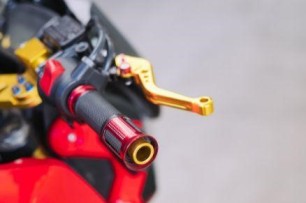
Learn how to slow down your bike after an unexpected brake failure
We can rave about the look and mileage of our bike's engine, but, at the end of the day, it all comes down to how efficient it is on the road. Driving in a country like India, where the roads and the path walks have no clear distinction, we might encounter various instances where we have to dodge a huge pothole or the kids playing on the street. So, having an efficient brake system is vital to ensure the safety of yourself and others.
The properties, characteristics, and behaviour of brakes do not always remain the same. These can be influenced by temperature, operating habits, operating durations, and effects of interconnected parts, sometimes leading to brake failure.
In situations where you come across a brake failure, being prompt on your toes will help you avoid any accidents.
1. Maintain your calm:
It's common knowledge that maintaining your composure under pressure helps you navigate any problem. The same is applicable for the time that you are on the road. If possible, taking your bike to a less busy road should be the first step to avoid crashing into people or vehicles.
2. Do not turn off the engine:
Your first instinct could be to turn off the engine and let the bike stop, but this can be extremely dangerous. You need to control the situation to avoid traffic crashing into you. So having a constant acceleration in this situation can prevent a crash.
3. Stick to the road and not the sides:
Without the brakes, your bike will be difficult to manoeuvre. Sticking to the sides might present you with uneven roads. Instead, wait for the bike to slow down before pulling over to the side of the road. Only under hefty traffic conditions should you consider going to the side of the road while your bike is still retaining speed.
4. Use your gears:
Surprisingly, gears can assist you in slowing down your bike in a situation where brakes aren't responding. You need to be alert and immediately start lowering your bike's gears. This will create a mechanical resistance from the engine opposing the motion, causing the bike to slow down. Using this method can help you control the bike and prevent the situation from escalating. Once your bike slows down, you can pull it over to a safe place and then shut the engine.
5. Use your horn:
Many times, we come across people relentlessly honking their horns in traffic jams. While that might sound annoying in most cases, do not shy away from alerting people on the road. Since they are not aware of your situation, it is best to attract attention and to be careful.
These are some things that you can focus on if your brakes fail. Road safety is paramount whether you are driving or a pedestrian. Be alert while handling the bars, focus on the road, and resist overspeeding.
Regular check-ups and servicing ensure both you and your bike are covered. Having bike insurance can add value to your experiences. So, consider getting bike insurance online to protect you against damages, third-party legal liability cover, and 24/7 assistance for emergencies.
Click HERE to buy bike insurance online.
Disclaimer: The information provided above is for illustrative purposes only. To get more details, please refer to policy wordings and prospectus before purchasing a policy.
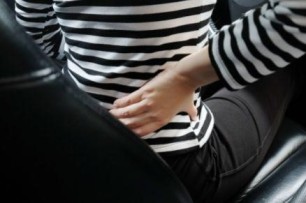
Six best ways to avoid backaches during car journeys
Planning impromptu road trips is always a great way to take some time off and have fun. These days, people like to travel with ease and comfort, so road journeys have become the ideal mode of travel during vacations. However, continuous driving can become uncomfortable and cause various back troubles like backaches, stiffness, numbness, discomfort, nausea, etc.
In this blog, we will discuss the six best ways to avoid backaches during car journeys so you can enjoy your trip to the full extent.
1. Comfort:
Make sure that you are comfortable from the beginning of your trip. Do not keep purses, watches, etc., in your back pocket as it might disturb the alignment of your spine, resulting in discomfort or backache. If you are driving, sit closer to the steering wheel instead of bending or messing up your posture to reach it.
2. Alignment:
Keeping your back aligned to the seat provides comfort while driving. You can add comfortable gear and equipment to help you maintain your back alignment. Roll up a towel and keep it between your back and the seat to maintain the curve of your posture.
3. Smooth rides:
Replace any worn tyres or parts that can cause jerks on the road. Make sure that your ride is as smooth and comfortable as possible. You can use a car seat cushion to help with your sciatica pain.
4. Breaks:
Road journeys require you to sit in the same positions for a longer duration of time which can cause numbness in your legs and back. To avoid the risk of backaches, make sure that you take breaks in the regular intervals of your trip and get out of your car to stretch your whole body. Move around a bit to ensure there is no stiffness.
5. Cold pack:
If you have pre-existing backache issues, it would be good to bring a cold pack for the journey. Backaches can trigger inflammation. Applying cold packs helps reduce inflammation and calm sore and numb tissues. To sustain the temperature of your cold pack, you can carry a cooler in your car and keep reusable ice packs in it.
6. Warmers:
Some people have found that seat warmers help relax the muscles by warming up the lower back. You can use reusable heating pads in place of a pillow that provides lumbar support, heat wraps that last for longer durations, etc., for a comfortable road trip experience without the risk of severe backache.
To avoid backaches, you must take good care of your posture during road journeys. Excessive strain on your body, especially the back, due to continuous driving for hours can affect your physical wellbeing. Follow the above tips to make driving comfortable and less exhausting.
Consider buying car insurance to avoid hefty expenses in case of any mishaps. Reliable car insurance with an additional feature of Personal injury protection (PIP) will cover all the expenses, including garage costs, medical bills and provides financial security under all circumstances.
Click HERE to know more about car insurance.
Disclaimer: The information provided above is for illustrative purposes only. To get more details, please refer to policy wordings and prospectus before purchasing a policy.
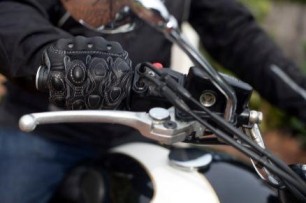
Learn how to control your bike on slippery roads or slopes
While riding a bike, it is necessary to know when to apply the rear or the front brakes. Randomly using both or either of them could lead to an accident.
Factors like maintaining your balance while driving or taking turns hold significant importance. Many people know how to ride a bike, but not everyone may be sure about controlling the bike in severe circumstances on the road. All you need is a little practice with a set of instructions to follow, and you're safe to go.
For now, we'll focus on how you can control your bike on slippery roads. This is because not everyone knows how to manage their balance, maintain a stable speed, and apply brakes on wet or slippery roads.
1. Brake force:
While you're driving on any conditional road, it is necessary to know all the braking techniques beforehand. For example, if you're driving at 20-30 miles per hour, you can use the rear brake and apply the same. But, it would help if you pressed it gently without much pressure. Applying too much pressure may cause you to end up slipping on the road.
Slippery roads are unsafe for driving. No matter what speed you're driving at, you can apply both brakes at the same time but with the same amount of pressure. However, pressing either one with higher intensity than the other could be risky.
2. Tyre gripping:
This is not well-known among most bike riders, but it is as important as knowing the braking system. A tyre should have a good number of treads to provide you control over slippery roads. So always make sure to check the grip of the tyres.
If the tyre does not have enough grip and treads, there won't be a layer of protection from the water on the road. A smooth surface can make your tyre straight flat and drastically increase the chances of slipping. Do not forget to check for any punctures or cuts on the tyre before heading for your trip.
3. Speed limit:
Many accidents occur because of the driver's negligence towards the speed limits. Managing the overall balance and speed in a car is different from bikes. If you want to stop or slow down, apply either or both brakes with equal pressure. Never slow down instantly. Leave the throttle and apply the brakes only after that.
4. Chain of the bike:
When you're driving on a wet or slippery road, the life of the chain could easily get affected by junk or jamming. In addition, if the chain is not oiled regularly, it could get loose and come off the socket. Hence, ensure to oil the chain regularly.
Driving on slippery or uneven roads can be tricky, so having bike insurance to protect you in any situation is essential. In addition, bike insurance will guarantee financial assistance in case of any damage to your vehicle and help you rest assured. With the tips mentioned above, enjoy your ride in the rain! Drive safe!
Click HERE to buy ideal bike insurance.
Disclaimer: The information provided above is for illustrative purposes only. To get more details, please refer to policy wordings and prospectus before purchasing a policy.
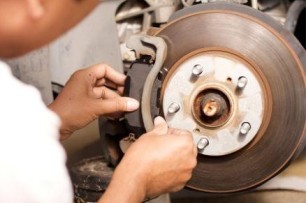
Here are a few ways to identify worn-out brake pads and fix them
If you own a car, you have to check on different parts that might require maintenance and replacement from time to time. You cannot be careless; otherwise, it might risk your and your family's safety and cause damage to your vehicle. In addition, it might restrict your dependency on it until the issues get fixed. Therefore, you need to stay ahead of these problems and watch for future repair and upkeep indications.
This article will discuss a few ways to identify worn-out brake pads and how to fix them. Now, worn-out brake pads are a thing you can miss out on while driving your car. But, first, you need to understand why you need to change your brake pads and how often you should change them.
Brake pads are made from various materials, ranging from metallic to composite to ceramic. However, irrespective of the material they're made of, you are supposed to replace them occasionally. Therefore, making sure that your car stays operational is very important, and changing worn-out brake pads is a part of accomplishing that. In addition, replacing your brake pads helps you in minimising your vehicle maintenance costs.
Now let's discuss WHY you need to change your car's brake pads:
1. Brake pads don't last the lifetime of your car and need to be changed at regular intervals.
2. They lose their efficiency every time you drive your car. So, the more you drive your vehicle, the more worn out the brake pads will be.
3. If you use your vehicle occasionally, the brake pads will still need replacement later than those who use their car frequently.
4. The car's ability to stop effectively reduces with worn-out brake pads. As a result, the overall effectiveness of the braking system also decreases.
5. The diminishing ability of your car to stop due to worn-out brake pads might lead to severe accidents, endanger the lives of the passengers, and cause severe damage to the vehicle.
HOW to identify if it's time to replace your car's brake pads:
1. It is helpful to have a brake pad sensor and "alert" light in your car. The light turns on, giving a notification that your brake pads need replacement.
2. Screeching or squealing noises while driving or applying the brakes indicate worn-out brakes.
3. Replace the brake pads if you notice that the car brakes are shaking. You will also realise that more effort is required to stop the car, and the braking is no longer smooth.
4. There is a grinding noise upon hitting the pedal.
5. During an oil change, when your car mechanic informs you about wearing and tearing of brake pads.
6. If they have reached their limit of service. Brake pads come with a stipulated period to work to their best performance. Eventually, they deteriorate in quality due to constant friction and wear and tear.
Now that we have discussed a few ways to identify worn-out brake pads, it would be wise to invest in car insurance to claim proper maintenance and various expenditures in unprecedented circumstances. You can explore all available insurance options and buy online car insurance that suits you best for your car.
Click HERE to know more about online car insurance.
Disclaimer: The information provided above is for illustrative purposes only. To get more details, please refer to policy wordings and prospectus before purchasing a policy.

Plan your perfect workcation at these top five serene destinations of India
Two years ago, the pandemic took over our lives like a storm. People were locked inside their homes for months on end. And as soon as the restrictions were lifted, we saw an increased number of people looking for ways to unwind. Having been cooped up inside their rooms for a long time, people started looking for alternate work locations. This became a growing trend amongst the working group. Studies suggested that taking workcations positively reflected the employees' morale and increased productivity.
The term workcation is a combination of two concepts; work and vacation. We saw people flooding their social media with pictures of them working from beautiful mountains or beaches in the background. If you have been wondering where to go for your next workcation, this article is just for you. We have brought a list of a few places you can go to enjoy your work.
1. Pondicherry:
If you are looking for an ideal beach location, Pondicherry is the place for you. It hosts various big and small cafes with a soothing ambience. Make use of the free Wi-Fi in the cafes for your work as you indulge in the delicious treats offered. Spend time in various eateries in the mornings and unwind by the beach for spectacular sunsets in the evenings.
2. Kasauli:
Any Ruskin Bond fan will know why Kasauli is on this list. This beautiful hill station in Himachal Pradesh boasts picturesque views of snow-clad mountains and lush forests. Kasauli, to date, holds memories of British history in its architecture. The churches offer a peaceful environment, much like the rest of the city, where you can sit with a warm cup of coffee and work your way through a stress-free day.
3. Munnar:
For a tea lover, there's no better way to work than with the aroma of tea in the air. Munnar hosts a variety of tea museums and stalls where you can enjoy the different kinds of tea that the town has to offer. The misty hills, the fast-flowing streams and tiny little cottages are equivalent to paintings. Enjoy your tea with some traditional Kerala banana fritters as you clock off for the day.
4. Udaipur:
The Venice of the east has an array of lakes with the beautiful Aravali hills skirting it. Work in the midst of royalty as you explore the various breathtaking palaces that Udaipur hosts. Characterised by a rich history, Udaipur is a must on your list if you are a history enthusiast. It has something for everyone, varying from grand palaces to tiny cafes, monotony is out of the question for any traveller.
5. Goa:
This is a no brainer for anyone wanting to take a vacation. If you are a party animal, there are many options in North Goa. Work in the mornings while enjoying the sounds of the beach and join the crowd for the party in the evening. However, if you prefer peace and calm, South Goa is the place for you.
These are a few places you can choose from for your next workcation. Keep in mind that the pandemic is not entirely over. So wear masks and carry sanitisers at all times. With such unpredictable times, it is a wise choice to buy insurance policy online. Invest in an insurance policy to ensure your travel plans are intact, and in case of an unforeseen expense, you stay is covered.
Click HERE to buy insurance policy online.
Disclaimer: The information provided above is for illustrative purposes only. To get more details, please refer to policy wordings and prospectus before purchasing a policy.
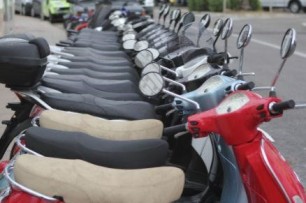
Five best tips for picking the right two-wheeler to satisfy your needs
Imagine you are already running late for an important meeting and get stuck in traffic. It sounds dreadful. With increasing traffic situations, two-wheelers are the most convenient way to reach your destination. In addition, they are easier to maintain and much more affordable.
Two-wheelers are your asset, and investing in one means choosing the best for your needs without ripping your pockets. So, here's a checklist that will make the decision easier when you buy a two-wheeler.
1. Understand the purpose of your two-wheeler:
Understanding the purpose of your two-wheeler is very important. How much will you use it? What will your daily travel be like? Are you going to use it for office work, personal travel, long rides, etc.?
Based on your purpose, you can select the right two-wheeler. For example, if you are taking it for family use, you might consider taking a vehicle that's convenient for every member of the house. Similarly, if you are going to use it for office or personal use, a bike can come in handy.
2. Mileage:
This is no surprise that petrol prices are becoming sky-high. Every two-wheeler comes with extra mileage, and you don't want to invest in one that shakes up your finances with the increasing expense of petrol every month.
Depending on how much you can spend on fuel every month, look for a vehicle that gives good mileage. When you search online, you can get details about the vehicle's mileage and decide accordingly. For example, a sports bike will have less mileage than a scooter.
3. What is your budget:
Budget is one of the top factors to consider when buying a two-wheeler. First, understand your monthly income, consider your expenses, then look at how much you're willing to spend on the two-wheeler.
If you are looking forward to paying for your two-wheeler in monthly installments, consider determining the EMIs you will have to pay. If they are too much, you need to develop an effective saving plan.
4. Service and maintenance:
No two-wheeler works properly without good maintenance. However, when you visit the store, ask about the after-service that you will get. Mainly, most companies offer first three services. Understand how much you have to spend monthly on the vehicle's maintenance. It will always help if you go with popular two-wheeler brands whose spare parts are affordable and readily available.
5. Features:
Every person has different expectations from their two-wheeler. Some may look for a good design, while others lean more towards comfort. Additionally, if you have back issues, you may want to consider that driving the two-wheeler does not hurt your back. List all the features you are expecting and consider the above points before selecting the best two-wheeler for you.
The tips mentioned above will help you determine if the two-wheeler is perfect for you or not. After deciding, ensure that you buy bike insurance online to protect your vehicle if things take a wrong turn and put a less financial strain on you. Your dream two-wheeler is just a few steps away. Go ahead and confidently pick the one that suits your needs!
Click HERE to buy bike insurance online.
Disclaimer: The information provided above is for illustrative purposes only. To get more details, please refer to policy wordings and prospectus before purchasing a policy.

Plan a perfect summer vacation to these top island tourist places of India
From ice-capped mountains in the north to beautiful peninsulas in the south, India promises several travel experiences for everyone. What astonishes the travellers is the diverse local culture, cuisine, and lifestyle that you can enjoy in every part of India. The country comprises various big and small islands with rich cultural backing, and today we will look into a few of these to help you plan your next summer vacation. We bring the top 05 best islands to visit in India, which you can add to your travel bucket list.
1. Diu island:
Possibly one of the most beautiful islands on the list, Diu Island consists of beaches and heritage that are sure to enchant anyone who visits here. From forts to caves to museums, Diu offers so much to explore.
The Diu fort reveals some of the forgotten Portuguese histories with eye-catching stonework structures. After exploring the city throughout the day, a visit to Chakratirth beach is a must. With a stunning sunset and a backdrop of local food stalls, this is the perfect place for you to unwind.
2. Havelock islands:
One of the most talked-about islands, Havelock hosts tourists throughout the year. The largest island in Andaman, it's famous for its blue water, picturesque views, and adventurous water sports. It is an easy competition to foreign beaches and will give you a lifetime of memories.
3. Lakshadweep islands:
The smallest group of islands with a population of as few as 60,000 residents, Lakshadweep is where you would want to go to stay away from the tourist crowd. Spending time on the island will help you closely see the local life in an island town. Since the beautiful beaches are the island's main attraction, this is your go-to destination if all you want is to hear the waves crashing and seagulls hooting.
4. Munroe islands:
Munroe island in Kerala is a cluster of eight islands that promises an impeccable view of narrow canals connecting a network of backwaters. Munroe islands was once an unexplored territory, and only now has it started opening to tourist exploration. Munroe has beautiful rustic architectural relics that have stood the test of time. It still holds the old culture and lifestyle of the place intact. You can enjoy a wide variety of home-cooked meals while enjoying homestay and interacting closely with the locals.
5. St. Mary's islands:
A collection of 4 small islands, this place is famous for its unique rock formation similar to Ireland's. A serene island, close to the coast of Udupi, it has significance in science as well. It is believed that these unique rock formations were caused due to subvolcanic activities in Africa.
These are a few of India's many beautiful island tourist destinations, which magnetically attract people from all over India. Remember that these places are set away from the mainland; hence ensure to look into safe and comfortable travel options. Carry first aid, emergency medicines, and snacks for the commute. Insure your travel plans with general insurance for greater financial safety. You can buy general insurance online and safeguard yourself against any unprecedented expense you might incur during your trip.
Click HERE to know more about how to buy general insurance online.
Disclaimer: The information provided above is for illustrative purposes only. To get more details, please refer to policy wordings and prospectus before purchasing a policy.
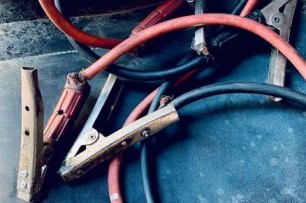
Effective ways to jump-start your two-wheeler
Imagine you have an urgent meeting in five minutes, and your two-wheeler refuses to start! In such times our mind completely freezes and fails to think of any solution.
Your previous knowledge of jump-starting your bike can come in handy in a situation like this. In this blog, we will list down some of the effective ways to jump-start your two-wheeler in any case.
1. Check battery charge:
The first and foremost thing you need to do is check the charge of your two-wheeler's battery. If the backlight and the headlight are glowing brightly, the battery is okay. If not, you need to take care of it immediately because it prevents you from starting the bike or scooter. If your two-wheeler is not starting at all, it's time to resort to one of the following methods.
2. Use another bike:
Ask someone to lend their bike to jump-start your two-wheeler. First, make sure that both the vehicles are on neutral and off. Next, connect the battery terminals of both the bikes with the help of jumper cables. After connecting them, start the other motorcycle and start yours. With no extra effort whatsoever, your two-wheeler will start. After that, take off the jumper cables and keep them somewhere safe and easily accessible.
3. With the help of a portable jump starter:
Keeping a portable jump starter at home is usually advisable, especially when your bike is a few years old. This method is easy and also the quickest one:
• Check that your bike, as well as the jump starter, are in off position.
• Connect the attached cables of the jump starter to your bike and switch it on.
• Try to start your bike.
Generally, it doesn't take more than a second or two for the bike to start, but still, if it fails to start, give it a minute or two. In addition, always keep your jump starter charged.
4. Using outside stimulus:
One of the traditional ways to jump-start your bike is to apply an outside stimulus. The most used way is giving it a push from behind. All you need to do is ask your friend, neighbour, or passer-by to push your bike while sitting on it. Remember to keep your bike in second gear to ensure safety.
The other way is to find an empty stretch of road (it's always better if the road is downhill) and try to push your bike down it. Once your bike gains a needed amount of momentum, it should start. However, always remember that the downhill is not very steep and doesn't have sharp turns or traffic. These are precautions to take to avoid an accident.
It is difficult to ignore the fact that all these options can cause harm to your bike too. Incidents are unpredictable. Therefore, to avoid unexpected and unfortunate events, it is better to have bike insurance to save you from the fear of extra expenses. Ideal bike insurance can protect your pockets from the extensive costs involved in servicing and repairing your bike.
Click HERE to know more about different deals on bike insurance plans.
Disclaimer: The information provided above is for illustrative purposes only. To get more details, please refer to policy wordings and prospectus before purchasing a policy.

The merits and demerits of combi brake system in two-wheelers
The braking system in any bike is the most important mechanism. A Japanese auto giant has been granted a patent for their combination braking system (CBS) for motorbikes. The combi brake system (CBS) simultaneously applies the front and rear wheel brakes with a single lever.
According to the Ministry of Road Transport and Highways’ new requirements, all two-wheelers sold post-April 2019 with an engine capacity exceeding 125cc must be fitted with Anti-lock Braking System, while models with an engine capacity of 125cc or less must be equipped with a combi-braking system (CBS).
In this post, we're discussing CBS, including its merits and demerits. Read ahead if you wish to know about this remarkable technology.
CBS vs Traditional Braking System:
The most effective braking approach is to use both the rear and front brakes simultaneously. However, most bikers either don't possess the skills for it or simply lack patience. Even if a rider manages to apply both brakes simultaneously with less competence, the chances are that they won't be applying proportional force to both brakes.
In most circumstances, this results in unstable and dangerous braking. The Combi Brake System with equaliser minimises stopping distance. It also enhances braking stability compared to traditional braking so that you may ride with the assurance of effective brakes.
Merits of CBS:
1. Braking distance minimisation: It helps to minimise accidents caused due to unexpected braking by reducing braking distance compared to standard brakes.
2. Safer option: It is better and safer than the standard brake system. CBS aids in maintaining the bike's balance during braking and avoiding the risks of accidents.
3. Suitable for wet surfaces: CBS delivers greater performance and secure braking in slippery and bumpy road conditions.
4. Availability: Combi Brake System's price is relatively modest, and it's simple to use on standard motorcycles. In contrast to the Anti-lock braking system, which only works with disc brakes, the CBS system works with both disc/drum and drum/drum braking combinations.
Demerits of CBS:
The Combi Brake system is not ideal for high-performance two-wheelers. It also impairs the handling of motorcycle riders who perform stunts on the bike, putting them in dangerous positions when confronted with abrupt and intense events. That is why Indian law has only made it mandatory for bikes whose engine capacity is lower than 125cc.
So far, more than 10 million people ride bikes with CBS. While CBS may have some disadvantages, they are mainly concerned with high-performance two-wheelers. In moderate engine capacity bikes, the pros outweigh the cons. While the Indian government makes it mandatory to have CBS in bikes below 125cc engine capacity, it is also required to have two-wheeler insurance according to the Indian Vehicle Act.
Renew or buy the best 2 wheeler insurance online available in India. Several insurance companies are offering exciting offers for online transactions. So, purchasing 2 wheeler insurance online has become more popular, especially post-pandemic. You need to be wise and choose a policy that will be the best for your bike.
Click HERE to purchase 2 wheeler insurance online.
Disclaimer: The information provided above is for illustrative purposes only. To get more details, please refer to policy wordings and prospectus before purchasing a policy.

The best summer driving tips for long-distance drivers
With the summer approaching, we are all excited to get out and soak up the sunlight. Road trips during the summertime are at the top of everyone's bucket list. You can enjoy a long drive to sandy beaches and resorts or a journey to cooler, remote hill stations.
While we all love long road trips, they can quickly get exhausting when you're stuck in the same spot for hours on end. The landscape might be worth every bit of your patience, but driving for several kilometres at a stretch can be mentally and physically bothersome.
You may invest in motor insurance India to secure your vehicle's health but caring for your health while on a lengthy midsummer journey is equally needed. Following these tips while driving long distances can make your journey more comfortable, safe, and fruitful!
1. Plan ahead:
Planning your road trip is essential so that you manage to follow the itinerary and reach your destination on time. As you know, you're going to be driving for long hours at a stretch, so you must make sure to pack all the necessary items to carry.
Keep track of your routes and highways, petrol pumps or gas stations on your way, restaurants or motels for refreshments, and the amount of food and water you require during the drive.
2. Prepare your vehicle:
Whether you are taking a car or a van, ensure the vehicle's condition and fitness are thoroughly checked before setting off on your journey. Check if your car fits for the long drive and the fuel tank is full to its capacity before leaving. Also, check the air pressure in the tyres and examine all other technical requirements.
Ensure that you carry all necessary car documents like your car's registration certificate, motor insurance India documents, driver's license, and PUC certificate.
3. Stay hydrated and eat well:
Dehydration and an empty stomach can disturb you immensely while on the road. Dehydration for long hours can cause blurry vision and muscle cramps that are incredibly dangerous while driving. The sweltering heat can get to you and cause dizziness if you haven't eaten.
Make sure to drink enough water and consume plenty of liquids during your journey. Eat a healthy meal before taking off and eat energy-giving, light foods whenever you make stops during the trip.
4. Take enough breaks:
Driving may be stress-relieving for some individuals but sitting behind the wheel for long hours can physically strain the body. You must make regular stops along the journey and get out of the driver's seat. Stretch your arms and legs and relieve any tension in your neck and back. Inculcating this habit can make the long journey much more comfortable.
5. Keep essentials handy:
While food, water, and car documents are the most vital essentials to carry, remember to pack other travel essentials like sunglasses, caps, sunblock, a torch, and a scarf or sweater. Carry emergency hardware to fix your car if any damage is caused on the road. Keeping a first aid kit is essential as you never know when you might need it.
Long road trips under the sun are what summer dreams are made of, but they can quickly become challenging. You must not forget to secure your health and safety in all the fun. Following these tips can relieve long-distance drivers from the issues they may face on the road. Prioritising the security of your vehicle is equally important. So invest in an ideal motor insurance India policy to protect you from unexpected losses and put less pressure on your pockets in case of physical damages to your car.
Click HERE to know more about motor insurance India.
Disclaimer: The information provided above is for illustrative purposes only. To get more details, please refer to policy wordings and prospectus before purchasing a policy.
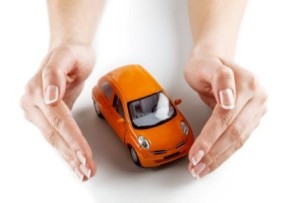
Complete guide to buy a short-term car insurance policy
Did you know that you can insure your car for a short period? Such as a few days or weeks. You must purchase short-term car insurance, often known as 'temporary car insurance.' Although it may seem strange, temporary car insurance is available, and people are already buying it.
Furthermore, short-term car insurance begins as soon as you pay for it. Some people may find that a short-term insurance policy is not ideal if they are unsure about their driving requirements. Let's take a closer look at a short-term car insurance policy in greater detail.
What exactly is short-term car insurance?
Short-term auto insurance can be valid for as little as a few hours or as long as some months, depending on the type of coverage you choose. It is possible to obtain short-term or temporary vehicle insurance coverage in some circumstances, such as when a person is not looking to purchase car insurance for more than a year.
How does short-term car insurance work?
Most Indian insurance policies fall into one of two categories: third-party liability and comprehensive insurance, with the latter being more commonly offered. In most cases, a standard automobile insurance term lasts one year. If one chooses to purchase comprehensive insurance, they will buy additional coverage through add-ons and benefit from other features. On the other hand, purchasing at least third-party insurance is mandated by law and gives the bare minimum of protection to the owner of the covered car in the event of an accident.
In situations where a person's need to drive a car is constrained by a specific time frame or a clear exit criterion, temporary car insurance may be necessary. Here, a person doesn't need to buy car insurance for a year because they don't drive a vehicle much. The time commitment could be anything from a few hours to a month or two at the most. Temporary auto insurance is uncommon in India, yet it is widespread.
Different types of short-term car insurance.
The coverage provided by short-term car insurance is minimal. It might be available in the following categories.
1. Rental car insurance:
Rental car insurance is the name given to the policy that protects a vehicle while it is being rented. Insurance policies for rentals typically include coverage for things like accidental damage and injury.
2. Gap insurance:
This insurance covers vehicles previously leased or financed through third-party financing. It provides gap insurance coverage in the event of a total loss, which is defined as damage that cannot be repaired. If the insurance provider compensates you for the fair market price of the vehicle, this policy will cover the difference.
3. Non-owners insurance:
Non-owners insurance is comparable to rental car insurance, although primarily available for private automobiles. People who borrow cars from family or friends are likely to buy non-owners insurance to protect themselves in the event of an accident.
Now that you've learned about short-term car insurance policies, you can make the most of a monthly car insurance plan to protect your vehicle. When you are only using a car for a limited time under the above three conditions, this is the most effective way of avoiding financial obligations. However, you should be prudent that not all car insurance companies offer this type of protection.
Click HERE to get more information about car insurance.
Disclaimer: The information provided above is for illustrative purposes only. To get more details, please refer to policy wordings and prospectus before purchasing a policy.

Let's understand the advantages of lightweight wheels
When you consider a bike's performance, many factors such as top speed, acceleration, engine capacity and power, mileage, accessibility of spare parts, servicing and maintenance, braking system, etc., contribute to a good outcome. Adding to this list are the wheels of your bike.
The wheels hold the tyres tightly to create a good balance and help steer the bike according to your driving directions and intensity. If you have a bike or are a bike lover, you would know that wheels come in different types, mainly lightweight and heavyweight. While each of these wheels has its pros and cons, how would we know which one is suitable for your bike?
This blog will discuss the benefits of lightweight wheels and how they add the "zing" to your motorcycle, giving it the winning edge.
So, let's understand the advantages of lightweight wheels to help you conclude which one you should choose and why.
1. We need to understand why weight matters:
To begin with, it is crucial to understand why the weight of the wheels matter. We can apply the fundamental theory of physics here. If anything is light and has lesser rotational mass (the level of resistance required to change its position or state), moving it forward is much easier. This is why it is convenient and requires less power from your bike's engine to move the lightweight wheels than the heavy ones.
2. Fuel consumption:
We all must opt for techniques to conserve fuel and make our vehicles more fuel-efficient. Lightweight wheels provide a way for your vehicle to use less power. So lesser the amount of power required to move the wheels, the less fuel consumed by the engine. There will be a minimal strain on the engine leading to minimising fuel usage.
3. Smooth movement:
Lightweight wheels, as already proved, are comparatively easier to move. In addition to the easy movement, lightweight wheels aid smooth turning and respond quickly, specifically in the corners. The smooth steering is a huge plus and excitement factor for bike enthusiasts. Besides improving gas mileage, lightweight wheels provide comfortable driving and a quality ride.
4. Need for speed:
Lightweight wheels are your best bet if you wish to achieve high speed while riding. They provide the comfort, quality and top performance of your bike. They show the immediate effect on the speed as you accelerate, thus achieving top speeds in a matter of seconds.
Get that adventure you seek by choosing the lighter wheels. But make sure you handle your motorcycle well, as lighter vehicles tend to be a little less stable. Safety is a huge concern, and you must adhere to all safety regulations. Gear up properly before you take your bike out for a ride.
We have already looked into how you need to be careful no matter the wheels you choose, and it is not always possible to anticipate any accidents or injuries you might end up in. Therefore, you must invest in bike insurance to safeguard it against the damages. You can browse all your options and deals before buying bike insurance. Select a comprehensive plan that offers the best coverage to your bike and comes with a reasonable premium.
Click HERE to know more about the benefits of bike insurance.
Disclaimer: The information provided above is for illustrative purposes only. To get more details, please refer to policy wordings and prospectus before purchasing a policy.

Try these effective ways to have a pimple-free and glowing face
Our skin and face bear a lot due to oil production, sweat, dust, and weather effects. Maintaining a clear and glowing complexion in these harsh conditions is a difficult thing. With social media taking centre stage in our lives, unreasonable beauty standards have been a constant.
However, one thing to keep in mind is that using multiple products might not be the path to glowing skin. Thousands of brands in the market promote expensive products to tempt you into buying them. Today we will look at a few inexpensive yet effective ways to have pimple-free and glowing skin.
1. Wash your face:
Pollution is a leading cause of breakouts and uneven skin. Research says that people who washed their skin twice a day saw a significant reduction in acne. Washing your face with a mild cleanser and cold water is the best way to clean your face and remove impurities.
2. Moisturise:
People often neglect moisturising when talking about acne-prone skin. However, moisturising can be significantly beneficial in the long run, no matter your skin type. Choosing non-greasy, light products that suit your skin type will help you in achieving glowing skin
3. Exfoliate:
Exfoliation helps get rid of dead skin cells that may clog pores and lead to acne. However, exfoliating daily can be harmful to your skin, hence stick to only once a week.
4. Consume water:
It’s no secret that water is the best medicine that solves a lot of your skin and health-related problems. Drinking at least 7-8 glasses of water is highly recommended as it helps wash out toxins from your body and reduces acne and scarring.
5. Avoid sugar:
If you have an excess acne problem, it is advisable to reduce your sugar intake as much as possible. A high glycemic index is a leading cause of acne.
6. Eat healthy:
Your skincare is only as effective as your diet. Having a well-balanced diet is crucial for clear and glowing skin. Consuming food items rich in vitamins and minerals is not only good for your gut health but also the health of your skin and hair. Eating clean food can show drastic changes in your skin.
7. Healthy Lifestyle:
There are countless articles on how leading a healthy lifestyle can positively affect your overall health. Regular exercise, sleeping on time and staying away from alcohol and smoking should be considered if you are aiming for a healthy life and glowing skin.
These are a few ways to give primary care to your skin and avoid pimples and dull skin. However, if the problem persists, consider going to a dermatologist. Your dermatologist will inform you about the products best suited for your skin type and any dietary changes that you may need to make.
Sometimes, the dermatologist might suggest getting blood work done to recognise any deficiency or allergies causing persistent acne and dullness. These tests and checkups can be expensive. Therefore, consider looking at online health insurance companies and choosing the best that equips you with the best healthcare treatment without stressing the huge costs payable for medical bills.
Click HERE to learn about online health insurance companies.
Disclaimer: The information provided above is for illustrative purposes only. To get more details, please refer to policy wordings and prospectus before purchasing a policy.

Understand these tips to secure your vintage two-wheeler with bike insurance
When you hear vintage, you instantly associate that with an old yet cherished classic piece. We have seen vintage lovers obsessing over them, from paintings to vases to vehicles. While vintage bikes are a preferred term, we cannot set aside that these items are old and dilapidated.
The vintage bikes are mainly out of production, and finding parts for them can be a tedious task. So how to take care of them? Should you get insurance for them? Here are a few ways to ensure your vintage bike with bike insurance.
Let's look at a few advantages of getting bike insurance for your old two-wheeler:
1. Since it's an old bike, you might face extra costs. Having insurance ensures that you don't bear expenses for the repair and maintenance of your bike.
2. With traffic and motor rules changing regularly, it is good to have insurance to avoid penalties
3. You can hassle-free renew bike insurance online and avail bonuses.
Many factors are considered before providing insurance for your bike. For example, the model, build, design, the conditions in which it is kept, how frequently it is ridden, etc. Ideally, getting a comprehensive cover would be an excellent idea for a vintage vehicle with many additional costs compared to a new bike.
Comprehensive insurance is a shield in case of accident, theft, or damage due to a third party. Moreover, comprehensive cover and add-ons can support you rest assured in the circumstances of natural calamities, riots, etc. Things that you should look out for before buying insurance for your bike are as follows:
1. Coverage:
Since everything is online off late, consider looking for a bike insurance renewal online. Look into various insurance factors and decide what is best suited for your two-wheelers.
2. IDV:
Being aware of the declared value for the current policy year is vital to know the current market value of your vehicle. This is the sum that the insurance will provide in case of theft or loss of the vehicle.
3. Utility of bike:
Since the market value of your bike depreciates every year, understanding how much you can use it will allow you to have an overall idea about the kind of coverage you would want.
4. Understanding your need:
Since you are the best person to determine what your bike needs, it is essential that you know what you expect from it. Do you want to keep it as a souvenir, or will you take it on the road? Insurance companies cater to various needs of the customer, so having a clear idea about what you need will help you understand what kind of cover your vintage two-wheeler needs.
So these are a few ways to ensure the longevity of your bike. With a plethora of options available in the market, having ample knowledge about different kinds of insurance can aid you in choosing the best for you and your bike.
The process of selecting the right insurance can be overwhelming. But with some patience and research, you will find the best options to renew bike insurance online.
Click HERE to renew bike insurance online.
Disclaimer: The information provided above is for illustrative purposes only. To get more details, please refer to policy wordings and prospectus before purchasing a policy.
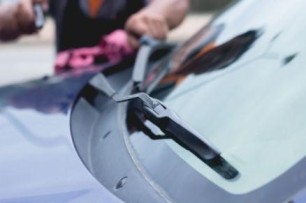
Here's how to stop your car's wipers from squeaking
The rains might not dampen your spirits on a long road trip, but the high-pitched jarring sound from the wiper blades will definitely. The peaceful sound of the rain, the music coming from the sound system, or the lovely conversations are drowned out by the annoying and shrill sound of the wiper blades, enough to ruin the mood. Not only does it affect the driver’s everyone's spirits, but it also affects the driver's concentration while driving.
Wiper blades can become noisy under several conditions, but the most common is dirt between the windscreen and the blade. A dirty windscreen will hinder the ease with which the blade glides over the screen, thus producing squeaking sounds. Another reason can be a mismatch in the blade's speed and the rain's intensity. If it's not raining heavily, and your wiper blade is set to high speed, it prompts the wiper to repeatedly go over the dry screen, resulting in unpleasant sounds. Squeaking wipers can also indicate worn-out and old wipers, and you must consider investing in a new one.
In this article, we will address some of these problems and a few ways in which you can stop your car's wipers from squeaking.
1. Dirty windscreen:
A dirty windscreen can be a driving hazard. Light refraction, obscured vision, and distracting squeaky wipers can hinder the driving experience. Maintaining your windscreen is imperative for a comfortable and safe ride.
You can avoid dirt and dust from accumulating on your windscreen by washing it with a good quality windscreen cleaner and a sponge. Before taking out your car to drive, ensure that your vision is not compromised.
2. Improper installation:
If your windscreen was recently adjusted or installed and you hear squeaky noises, then most likely, the setup wasn't correctly installed. You might need to remove and reinstall the wiper to rectify the issue. If you are unsure how to set the wiper properly, it is best to consult a mechanic at a trusted service centre.
3. Improper use:
It can become fragile if the wiper is not used correctly or overused. A broken wiper is of no use. Hence it is better to change and optimally use the wiper in the future.
4. Unclean wiper:
Wipers are often neglected when it comes to cleaning and care. It is a relatively straightforward process to clean the wiper blades. Some water, sponge, and soap are all you need to clean the wipers. Remember not to overdo it as fibres or cloth particles may be left behind, which can cause friction, further worsening the situation.
5. Wiper rubber blades:
Wiper rubber blades can go through wear and tear over time, and you should regularly inspect them for any damage. You can change the rubber blades once a year or whenever necessary.
These were a list of things you need to take care of if you hear squeaking or shrill sounds from your wiper blades. Remember that the tiniest discrepancies in seemingly small parts of your vehicle can cause serious driving hazards and even result in fatal accidents if not given timely care.
Regular maintenance and timely change of parts are essential to keep your vehicle working efficiently. Take that extra step towards the safety of your car and invest in car insurance. Buy car insurance online and get a value-added advantage to prevent additional expenses you might incur in damages and repairs.
Click HERE to buy car insurance online.
Disclaimer: The information provided above is for illustrative purposes only. To get more details, please refer to policy wordings and prospectus before purchasing a policy.

All you need to know about road tax in India
Several state and national highways link India's vast geography. The country's roadways network stretches over 5 million kilometres while consistently increasing and is one of the largest roadway networks globally.
This vastly interconnected system is financed by the Indian Government that collects a sum of taxes from the citizens for the regular maintenance of the roads. Therefore, it is integral for every citizen to pay their taxes on time for the smooth functioning of the roadway system.
What is Road Tax?
When purchasing a vehicle, an individual must pay the base manufacturing price and a few extra charges. These additional charges typically include registration fees, relevant motor insurance, and a motor or Road Tax. The road tax is a sum of money paid while purchasing a vehicle in the state or country. The tax differs in all states as it is subjected to different tax structures and clauses.
A certain amount of road or toll tax is levied on vehicles using the state or national highways. These taxes differ according to state regulations, highway distance, and other relevant factors.
Who determines the Road Tax?
These Government bodies typically determine the road tax:
1. The state government levies the state vat tax, toll tax, annual or lifetime motor vehicles tax, and passenger and goods tax.
2. The Central Government levies the GST, customs duty, central excise, central sales tax, and other additional charges depending on the vehicle category.
Who has to pay the Road Tax?
While purchasing a vehicle, motor insurance is not the only cost that the individual must incur. The road tax is a compulsory tax that the individual must pay while purchasing a new vehicle. In India, this tax is charged on both private and commercial vehicles. Every individual who purchases motorised vehicles such as bikes or scooters, cars, auto-rickshaws, or even buses and trucks, needs to pay the tax irrespective of the vehicle's size.
Although the vehicle's manufacturing cost price primarily determines this tax, it is typically calculated considering other factors such as the motor or engine capacity, seating capacity, weight, and cost price. Thus, the road tax paid by every individual differs based on the vehicle as well as the state of purchase.
When and Where to pay the Road Tax?
An individual must pay the road tax for a vehicle during its registration. Depending on the state's mandate, the tax can be paid with flexibility, either one-shot payment or in yearly instalments. The vehicle owners may choose to pay the tax offline or online as per their convenience. If one is shifting their residence to another state, they need to re-register their car in the RTO of the new state and then repay the road tax.
To sum up, paying the road tax is an essential duty of every vehicle owner as a responsible citizen to help contribute and maintain the country's roadway network. However, being responsible for your vehicle's safety is equally important, and you can achieve this by purchasing a motor insurance plan that offers complete protection to your valuable asset.
Click HERE to know more about motor insurance.
Disclaimer: The information provided above is for illustrative purposes only. To get more details, please refer to policy wordings and prospectus before purchasing a policy.

Did you know about these side effects of excessive water consumption
Water is the solution to all problems, according to most people. And no doubt, it is indeed one of the most potent ingredients for a healthy life. Good skin, weight loss, better hair, or even mild headache, water is a cure for all. It is an essential resource for life to exist and flourish. However, excess of anything is poison. Similarly, excessive consumption of water can have several complications and side effects.
Surprising, isn’t it? This article is just for you if you want to know how overhydration can harm you. We will look at all the side effects that excessive water consumption can cause. Let’s take a look at different kinds of overhydration and their causes.
1. Overdrinking:
Overdrinking is a condition that happens when you drink too much water and your kidneys fail to flush out as much urine. This leads to water accumulating in your bloodstream, causing the dilution of essential substances.
2. Water retention:
This situation arises when the body cannot flush the water correctly due to various medical conditions. Several heart diseases and liver and kidney problems may cause water retention in your body.
The colour of the urine is a good indicator of water levels in your body. Pale yellow colour urine indicates the optimal amount of water in your body, while darker colour urine indicates dehydration. If, however, your urine is transparent, that is a clear indication of overhydration.
Now let’s take a look at the effects of overhydration:
1. Water intoxication:
When you consume more than five to six litres of water daily, you may start seeing symptoms of water intoxication. Some minor symptoms include headaches, cramps, spasms, vomiting, and fatigue. The more severe consequences of water intoxication can be seizures or blackouts.
If you start noticing symptoms like those mentioned above, rush to the nearest hospital. The excess amount of water in your body can lead to fluid build-ups in the cells leading to swelling. Swelling can lead to coma and seizures and can even be fatal if not given immediate medical attention.
2. Nausea or vomiting:
The symptoms of dehydration and overhydration are almost interchangeable. Since too much water is accumulated in the system, the body rejects the excess. This leads to diarrhoea or vomiting.
3. Headaches:
As the body’s salt levels deteriorate significantly, the cells swell. The swelling causes pressure inside the brain cells, causing severe headaches. Sometimes it can lead to clotting and troubled breathing as well.
4. Weakness and lethargy:
Like salt, the electrolytes dilute due to excess water in the body. Electrolytes are crucial when it comes to maintaining energy levels in your body. An imbalance in the electrolyte levels can lead to fatigue and weakness.
It can also cause muscle cramps and spasms. Your kidneys are working extra to flush out the unwanted water. This creates a hormonal reaction leading to drowsiness and feeling less energetic.
5. Swollen body parts:
Due to an increase in the water retention in your body, and the electrolyte imbalance, you may notice swelling in different parts of your body, such as the legs, lips and fingers. You may also notice a discolouration resulting due to hormonal changes caused by excessive water.
These are a few side effects of excessive water consumption. Excess water in your body can bring about various hormonal and other significant changes. Treatment for these should be taken under the guidance of a medical practitioner to avoid further complications. However, an immediate remedy to overhydration is the consumption of salts or electrolytes. Regaining the concentration of salt and electrolytes in your body can be a temporary cure.
Just like overhydration, there might be other issues in your body that you might not be aware of. Get an expert opinion to recognise any underlying issues and address them with proper and timely medication. Many online health insurance companies provide comprehensive coverage on all such check-ups and treatments that you might want to look into. Take advantage of this feature and benefit yourself and your loved ones.
Click HERE to know more about online health insurance companies.
Disclaimer: The information provided above is for illustrative purposes only. To get more details, please refer to policy wordings and prospectus before purchasing a policy.
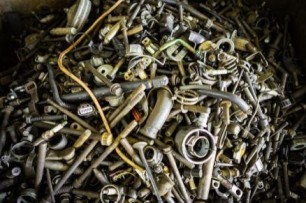
Disadvantages of using duplicate spare parts for your car
Spare parts can either extend the life of a vehicle or cause it to fail instantly. Often fake replacement parts are created without the consent of the manufacturer. As a result, it is difficult to distinguish between genuine spare parts and counterfeit replacements. Furthermore, because fake parts are less expensive, consumers are more likely to purchase them to save money and fail to verify their validity.
The performance of fake spare parts is inferior to that of original replacements. You never know when they'll give out and do harm to the car's workings or its passengers. Purchasing car insurance can protect you from any damage caused to your vehicle. Always compare various new car insurance rates to find the best deal for you.
Here are some of the reasons why fake spare parts are dangerous.
1. Safety is at risk:
Fake spare parts may endanger not only the safety of the vehicle but also its passengers. To give an example, if you were to buy fake brakes, you might have trouble applying brakes on time. Fake engine spare parts can also result in a short circuit, potentially dangerous to the engine's functionality. As a result of these factors, counterfeit replacement parts are considered a safety hazard.
2. Additional expenses:
The majority of individuals believe that acquiring cheap spare parts will save them a significant amount of money. However, it results in increased expenditure because the fake spare component will often fail to function. Instead, authentic spare parts will save money because they will last longer and come with a warranty.
3. Has an impact on the vehicle's warranty:
Warranties are valid guarantees for a specific period. The carmaker agrees to repair any defective spare parts or repair the vehicle. Using fake spare parts may void the warranty completely. Another critical reason to avoid using counterfeit spare parts is to protect yourself from identity theft.
4. Safety concerns for other vehicles:
If you use forged spare parts, your vehicle's systems will not perform to their maximum capacity. This means you will be putting other people in danger when you drive.
5. Poor quality:
Given the heavily low price of fake spare parts, the companies are frequently forced to compromise quality and appearance. Moreover, the materials utilised are of poor quality. As a result, these parts are not constructed to survive for an extended period. Therefore, spending a little more money on authentic parts is preferable rather than settling for low-quality counterfeit replacement parts that pose a higher risk.
6. Other potential risks:
For various reasons, it's best to avoid using counterfeit replacement parts. Like, at higher speeds, fake tyres might deflate and fall apart. Fake oil filters may be ineffective in filtering, making the counterparts go dry. This will have an impact on the engine's operation. Installing cheap seatbelts and airbags is a terrible idea that can be life-threatening during mishaps.
In addition to reducing the vehicle's depreciation value, buying fake parts is a poor decision for various reasons. These faulty spare parts can betray at any point, making them more dangerous. So, as a sensible customer and a responsible citizen, and refuse to buy fake spare parts. Also, check out the most affordable new car insurance rates that can protect you in the event of an accident.
Click HERE to know more about the new car insurance rates.
Disclaimer: The information provided above is for illustrative purposes only. To get more details, please refer to policy wordings and prospectus before purchasing a policy.

Here are a few important tips to undertake while taking your bike for a wash
If you have just come back from a long trip and your bike is covered in dust and looked nothing like you would want it to, then this article is for you. We will look into some of the essential things that need to be kept in mind when you plan on washing your bike to avoid making mistakes that might prove to be expensive later on.
Cleaning and regular maintenance ensure the long life of your two-wheeler. It helps you monitor any minute structural changes and avoid the accumulation of corrosive substances like road salt, grime, etc. Besides, needless to mention here, having bike insurance is non-negotiable, and you might want to look into some bike insurance online before reading on. A good bike insurance protects your bike with financial cover against any damages to it.
1. Cleaning kit:
Having your cleaning supplies in order before washing is essential to avoid latency and prevent the water from getting into places it shouldn’t. So, get your sponges, washcloths, spray bottles, microfiber cloths, and other items ready for ease of access and prompt use of them. Since each of these tools serve a unique purpose, it is advised to understand the purpose of each. E.g., Sponges are used to gently remove any dust particles while brushes are used to get into crevices.
2. Working condition:
It is crucial to have a good work area set up before washing the bike. Avoid washing it immediately after riding it. Let the engine cool down so that it does not go into a thermal shock when you wash it with cold water. Avoiding direct sunlight is also advised as it can dry up the soap faster, and any undue pressure can lead to scratches and watermarks on the surface.
3. Plug exhaust:
Ideally, the exhausts are structured to avoid water pooling, but having a rubber plug for your exhaust is a good idea. Make sure to plug the exhaust before washing the bike to prevent water from getting into the pipe and clogging the exhaust unnecessarily.
4. Choose your cleaning product wisely:
While many people believe that laundry detergent is a good choice for your motor vehicles, it is not the case. Products that are not explicitly suited for them can damage the paint and the structural integrity of the metal owing to the harsh chemicals present in generic detergents. Using foams can be a good alternative for washing brushes.
5. Do not use hosepipes:
Hose pipes can be the easiest way to water your plants, but it is not the best one when it comes to washing your bike. Directly streaming powerful jets of water can harm the paint job on your vehicle and can also lead to dirty patches.
Buying nozzle heads that can be attached to the tip of the pipe so that water can be sprayed harmlessly is a good choice. These are some things that you need to keep in mind before taking your bike to wash. Washing your bike for the first time can come with many questions. The tips above will help you in answering a few of those.
Owning a motorcycle is an excellent feeling, but it also comes with some responsibilities. Regular maintenance and proper servicing, albeit expensive, can ensure the longevity of your bike. However, having bike insurance promises that these services do not burn a hole in your purse. Therefore, without any delay, invest in bike insurance online, and provide the best care to your two-wheeler to cover more distances together.
Click HERE to know more about bike insurance online.
Disclaimer: The information provided above is for illustrative purposes only. To get more details, please refer to policy wordings and prospectus before purchasing a policy.
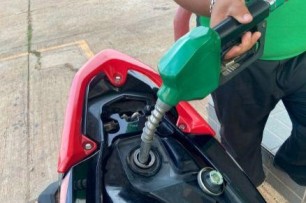
Here are the top three parts that can make your bike more fuel-efficient
With fuel prices skyrocketing now more than ever, it has become a rule of thumb to ensure that the vehicles you purchase or use, are fuel-efficient. Consumption of a limited amount of fuel can be an escape from burning a hole in your pocket. Plus, fuel-efficient vehicles help to reduce pollution and smog. So, making your vehicle fuel efficient can cause significant changes in your lifestyle, and you can contribute your part towards the biggest concerns of climate change.
Are you looking for suggestions for reducing your carbon footprint through less fuel consumption? Or do you wish to make your vehicle more fuel-efficient so you don’t burn through your savings?
This blog will discuss how you can achieve a more fuel-efficient vehicle using various techniques. Here are the top three parts that can make your bike more fuel-efficient. Let’s get started.
1. Give a rest to those breaks:
Your bike will consume less fuel and give you a better mileage if you unnecessarily avoid using brakes. Also, by preventing rash and aggressive driving, you save substantial fuel. Accelerating out of bounds and then hastily using the brakes will cause your vehicle to consume more fuel and power, thus diminishing the whole purpose of making your vehicle more fuel-efficient.
Always ensure you drive within the specified speed limit and abide by the traffic rules. This will not only help your bike stay in good condition but also prevent any accidents.
2. Be careful about the frequent gear change:
Along with the brakes, you must also ensure that you avoid changing the gears frequently and hastily. Driving at a constant speed will not only help you be safe on the road but will also consume less fuel, thus raising the fuel efficiency of your bike.
If you continuously operate your bike in the highest gears even when you don’t need it, it will lead to unnecessary fuel usage. Instead, always ensure that the operating gears are suitable for the road conditions you are driving in.
3. Take care of the tyres:
You must take care of the tyres to ensure that your two-wheeler consumes less fuel and maintains a good grip on the road. To take care of it, check if they are not underinflated. In the case of underinflated tyres, drag is created, increasing the friction, thus requiring more power and fuel to move the bike forward.
This unwanted drag can make it difficult for you to drive your vehicle. Properly inflated tyres reduce the drag, thus requiring a low power supply from the engine. This results in lesser fuel consumption.
Now, you need to keep an eye on the pressure and the amount of air-filled in the tyres. They must be inflated according to the default prescribed levels set by the bike manufacturer. Anything more or less than the mentioned limits can cause damage to the tyres and, in turn, the bikes.
Some other ways to make your bike more fuel-efficient include:
● proper maintenance of the bike and all its parts, using authentic and manufacturer-recommended spare parts in case of any damage
● driving safely and calmly
● purchasing the best fuel for your motorcycle
● check the air filters, and in case of any clogging, clean them
● regularly cleaning up your engine
We hope this blog provided valuable insights on making your bike fuel-efficient. Saving on fuel and spending extra during damages is not a wise thing to do. The best solution can be to purchase bike insurance to protect your bike against any damages, some of which might be sudden. Therefore, you must explore different options and buy the best bike insurance online to cater to your needs.
Click HERE to know more about purchasing bike insurance online.
Disclaimer: The information provided above is for illustrative purposes only. To get more details, please refer to policy wordings and prospectus before purchasing a policy.

Benefits of wearing orthopaedic shoes and quick tips for choosing the right ones
Just like any other part of your body, you must take care of your feet. Any ignorance can land you into severe issues such as extreme pain and discomfort while walking, hip problems, back problems, posture issues, hammertoe (pain issues in the joint of the middle toe), etc. The other common problem among women is metatarsalgia, a condition when the ball of your foot starts having pain and gets inflamed. This happens due to the constant use of high and tight heels.
Did you know there is a magical solution for all your feet problems? Orthopaedic shoes are one of the best options out there in terms of footwear. Orthopaedic shoes are made according to the doctor's advice and are accurate against foot problems. Foot troubles and conditions take quite a long time to heal; some might become critical if not taken care of initially. And orthotics are the best treatment that lasts longer and helps to heal. They act as a catalyst in your daily movement without any side effects.
Are you someone looking for more information on orthopaedic shoes? This blog will discuss the benefits of wearing orthopaedic shoes and quick tips for choosing the right ones. So, let's get started!
1. Boosts circulation:
Orthopaedic shoes are designed to improve circulation in the foot area instead of restricting the blood flow. The shoes help you adjust your feet, provide comfort, allow flexible movement, and improve the restricted blood flow. These shoes also provide immense relief from the pain in the nerves.
2. Improved support:
Suppose your shoes create discomfort while wearing or moving around. In that case, there is a considerable risk of severe foot problems like flat feet, metatarsalgia, and plantar fasciitis (pain in the heels due to flattening up of tissues that link the heel to the toes), etc.
These problems, if ignored, can go on to intensely affect your mobility and cause unbearable pain and discomfort. To avoid such grave health issues, wearing orthopaedic shoes provides an arch of support, proper padding, and cushioning for your heels.
3. Pain relaxers:
People who walk around ten thousand steps daily feel numbness and pain after a tiring day. Wearing orthopaedic shoes can help them ease into their routine and carry out their daily tasks effectively. It also prevents any redness and skin issues in the feet.
4. Say goodbye to the foot problems:
Orthopaedic shoes are your go-to solution against all kinds of foot problems like foot alignment, pain in the foot's arch, arch-related damages, etc. These problems can, over time, be corrected by the constant use of the right orthopaedic shoes. These shoes provide the best comfort, support, and cushioning to help your feet regain shape, alignment, and health.
While choosing the right orthopaedic shoes for your feet, do consult your doctors for the prioritising factors and dimensions required. Make sure to walk around in the shoes to analyse how the dynamics feel and be careful about the size. Buying the right size is very important. From formal to casual and stylish, there are multiple options of orthopaedic shoes.
That's a wrap on the benefits of wearing orthopaedic shoes and quick tips for choosing the right ones. As we talk about orthopaedic shoes and how they help keep your legs and feet in good health, it is wise to discuss health insurance for yourself and your parents. Specific problems come with age, and you must purchase the best health insurance in India for parents to ensure that they suffer no financial trouble as they grow older.
Click HERE to know more about purchasing the best health insurance in India for parents.
Disclaimer: The information provided above is for illustrative purposes only. To get more details, please refer to policy wordings and prospectus before purchasing a policy.

Follow these simple steps to detox your kidneys at home naturally
Kidneys are vital organs of our body. These two small, bean-shaped organs are located on each side of your spine and help remove toxins from the blood, balance mineral levels, and regulate blood pressure. The only way to keep your kidneys healthy is by staying hydrated and eating a balanced and healthy diet.
Your kidneys can detoxify independently, but sometimes they may not function optimally. Less-functioning of kidneys causes symptoms like fatigue, bloating, and trouble sleeping. Making changes to your lifestyle and creating a diet strictly based on kidney-friendly foods can assist the body's natural detoxification process. If you're experiencing a retain of water, a little more tiredness than usual, or elevated blood pressure, it might be time to give your kidneys and the rest of your body a little extra attention.
The following are the simple steps to detox your kidneys at home naturally.
1. Increasing water intake:
Drinking less water can cause dehydration, a build-up of wastes and acids in our body that clogs the kidneys. The only way to remove these toxic wastes from your body is to drink lots of water. The amount you need to drink depends on your age, body weight, climate, and physical activity. Medical researchers recommend drinking about 4 litres of water for men and 3 litres for women.
2. Including healthy foods in your diet:
It is one of the first steps to get your kidneys back healthy and in optimal shape. A healthy balanced diet is essential for the proper functioning of kidneys.
Consider including the following foods in your diet:
• Lemon juice – Lemon juice is acidic, increases the citrus level in your urine, and suppresses the growth of kidney stones. It also filters blood and other toxins. Include daily intake of diluted lemon juice to reduce the formation of kidney stones.
• Apple cider vinegar – Apple cider vinegar helps prevent oxidative stress of the kidneys. The citric acid in apple cider dissolves kidney stones. It also helps lower blood pressure, balance blood sugar, and increase levels of antioxidants, which creates optimum conditions for kidney health.
• Watermelons and pomegranates – Watermelon hydrates and cleanses the kidney. It is also rich in the organic compound lycopene, which improves cardiovascular health and ensures the well-functioning of kidneys. The juice of pomegranate contains potassium salts which are also effective in removing kidney stones. In addition, the astringent properties of a pomegranate prevent stone formation and flush out toxins.
3. Boost immunity by drinking kidney-friendly juices and teas:
You can supplement your fluid intake with dandelion, alfalfa, or green juices. They are effective in reducing the chances of kidney stone formation. Beet juices contain betaine, which increases urine acidity and prevents calcium oxalate crystals (a common constituent of kidney stones). Other effective cleansing agents include coconut water, cranberry juices, and cherries.
4. Avoid kidney-threatening foods and habits:
Avoid bad habits, including smoking, drinking, and excessive coffee intake. Limiting processed foods, added sugars, artificial sweeteners, etc., will help maintain the kidneys' overall health.
Taking good care of the kidneys is crucial to feeling fresh and active. Before trying out a detox process, consult a doctor or dietician to ensure that you'll be consuming enough electrolytes and calories to support your everyday metabolism. In addition, conduct regular checkups and screenings to ensure the health of your kidneys.
We would also recommend you insure yourself with a health insurance plan to safeguard your health against any possible health issues. There are a plethora of policies available online, each with its distinct perks. Browse through online health insurance companies, compare their plans, and choose the best to stay fit.
Click HERE to browse through the best health insurance plans.
Disclaimer: The information provided above is for illustrative purposes only. To get more details, please refer to policy wordings and prospectus before purchasing a policy.

Best tips to check and maintain your car's suspension
The comfort and the ease of driving your new car are something that you always remember. However, with time, you start noticing small changes and don't feel the same comfort anymore. There could be many reasons for that. Wear and tear in the car seats, engine load, worn-out tyres, etc.
A car’s poor suspension could also be the reason for the growing discomfort. A fully functional suspension system ensures a smooth driving experience and keeps the vehicle under control. Over time the suspension system in the car experiences wear and tear and can take away from you a wholesome driving experience.
A suspension system comprises components such as wheels, tyres, springs, steering, etc. Different driving conditions govern these parts' longevity and wear off over time. To ensure that your car is working in proper condition, it is crucial to recognise any faults in the system and address them immediately to ensure safety while driving.
In this article, we discuss a few ways to check and maintain your car’s suspension.
1. Check air pressure:
Properly inflated tyres ensure that the chassis is protected from any damage. If they are not fully inflated, they can affect the vehicle's handling and performance. This can also be extremely dangerous when driving. To ensure that your tyre pressure is optimum, check it after driving every two thousand kilometres.
2. Wheel alignment:
Wheel alignment is another vital activity that ensures proper and risk-free driving conditions. The more challenging roads you take, the more likely your tyres are misaligned. Wheel alignment should be checked every two years or less, depending upon the kind of tracks you drive on. If you face difficulty while handling the steering or manoeuvring your vehicle, this indicates misaligned wheels.
3. Check power steering fluid:
If you enjoy the comfort of power steering or the hydraulic steering system, then maintaining and changing the fluids is part of your car’s regular maintenance. Check the level at least once a couple of months and replace it every three years. It is best to talk to a mechanic or refer to an owner’s guide to understand your car’s needs better.
4. Inspect shock absorbers:
If your car shudders or bounces abnormally when you drive, then these are indications of flawed shock absorbers. Make a visit to your nearest service centre to have the inspection of the shock absorbers. Ensure to get the shock absorbers checked after the first ten thousand kilometres and then annually. More challenging tracks and changing climates can cause wear and tear faster in the shock absorbers and might need to be changed sooner than mentioned above.
5. Accidents:
Slight irregularities can also affect the working of the chassis. If you have met an accident, hit a huge bump, or ran across a pothole, the chances are that some nuts and bolts could have disoriented from their original position. An inspection by a mechanic will help you rest assured and will not give you any trouble in the middle of the highway.
These are some ways to ensure that your car’s suspension works correctly. To avoid extra expenses or a complete breakdown, it is best to undergo regular servicing and check-ups for your vehicle. These services are a way of ensuring that every part of your vehicle is functioning effortlessly and efficiently.
Ignoring problems can lead to several damaged parts, which can be extremely dangerous when driving. Buy private car insurance India to ensure maximum safety and an amazing driving experience for your car. The right insurance boosts the longevity of your vehicle and undertakes expenses that might cost you a huge amount.
Click HERE to know more about private car insurance India.
Disclaimer: The information provided above is for illustrative purposes only. To get more details, please refer to policy wordings and prospectus before purchasing a policy.
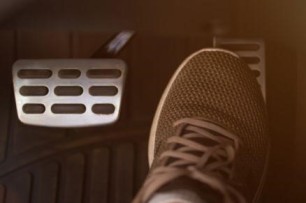
Five reasons your car undergoes acceleration problem
Car acceleration issues, apart from being bothersome, can also be dangerous. There are several reasons why your car might have a problem while accelerating. Technically, when you push the gas pedal, several components and sensors work seamlessly to move the vehicle forward and achieve that speed. Even a minor failure in this whole system can hamper your car's acceleration.
The car's internal combustion engine needs to breathe to accelerate quickly and develop the desired thrust and power. It compresses a specific amount of air and fuel ignited in the combustion chamber. The exhaust gases from the process are released through the tailpipe. If there is any disruption in the process, a loss in power will occur.
Engine performance has been controlled by the Engine Control Module (ECM) since the 1980s. The ECM uses the data from several different sensors to administer the combustion process. Issues in air and fuel delivery sensory problems are the leading cause of acceleration malfunctions.
Let's discuss the reasons your car may undergo acceleration issues in detail.
1. Check the air filter:
If you're facing trouble accelerating your car, you might need to check the air filter. The function of the air filter is to trap dirt and other impurities and prevent them from entering the combustion chamber. A clogged air filter prohibits the air from entering the combustion chamber, further affecting the process.
2. Keep the fuel system clean:
A clogged or dirty fuel system also disrupts power generation, thus affecting the vehicle's acceleration. The fuel does not reach the combustion chamber and therefore starves the engine and causes low power.
3. Fix the ignition:
Ignition issues can be one of the leading causes of acceleration problems. These systems are designed to ignite the air/fuel mixture by creating a powerful spark. However, poor-quality ignition wires or dirty power plugs can cause trouble in the complete burning of fuel in the combustion chamber. This results in the loss of power necessary for achieving quick acceleration.
4. No way out for the exhaust gases:
Exhaust gases from the collapsed catalytic converter get trapped at times which hinders the breathing capability of your engine. This inhibition builds up excessive back pressure and causes a significant loss of engine power.
5. Have a functional O2 sensor:
The oxygen (O2) sensor measures post-combustion oxygen levels in the exhaust chamber. A slow-reacting, damaged, or dirty O2 sensor is responsible for the quality of the air/fuel mixture, which impacts the engine, thus affecting the acceleration.
Some other reasons due to which your car undergoes acceleration problems are:
• A slipping clutch disk that doesn't wholly engage with the transmission to the engine.
• A dirty or defective mass airflow sensor (MAF) affects the engine's airflow, causing a strain in acceleration.
• The throttle plate position and movement are measured by the Throttle Position Switch (TPS). A problematic TPS data affects the air/fuel mixture engine speed and ultimately strains the acceleration process.
Now that we have discussed several reasons for an acceleration problem, it would be a wise choice to purchase car insurance to protect your vehicle and you against unanticipated troubles. Mishaps come uninvited, so you need to be prepared during the good to be safe during the worst.
Address the above problems related to acceleration and fix them at the earliest to ensure safe travel. If your car demands extensive repairing, don't refrain from visiting a mechanic. Instead, guarantee your repairing expenses with car insurance benefits and make your vehicle functional again.
Click HERE to know more about car insurance.
Disclaimer: The information provided above is for illustrative purposes only. To get more details, please refer to policy wordings and prospectus before purchasing a policy.

Five reasons why eating in your car is a bad idea
Distracted driving is one of the most common reasons for fatal car accidents. However, calling and texting are not the only forms of distractions for driving. When it comes to the most distracting factors while driving, many individuals overlook eating. If there's one thing we can all agree on, it's that we've all had to eat our meals on the go, or at least the majority of us have.
When behind the wheel, drivers must keep their attention on the road and adhere to all safety rules to be safe. People who eat while driving are multitasking and diverting their focus away from the road, putting multiple lives at risk.
Learn more about the unpleasant reality of eating in your car.
1. Reaction set back:
Your response time will be slower and delayed if your eyes and focus aren't on the road. Accidents might occur as a result of delayed reactions. Your brain and senses need to respond swiftly to sudden changes on the road. Therefore, you cannot afford to preoccupy your attention with other activities like sipping coffee or having a burger while driving.
2. Bug alert:
You're creating a biohazard food trap by treating your car as a makeshift dining room. Engineers compress a lot of components into a tight area, a plethora of even narrower spaces that only French fries and breadcrumbs seem to fit. It has the potential to become a gold mine for insects and other small creatures.
3. Health faux pas:
While eating in the car can be handy, it rarely equates to healthy eating. The common fast-food alternatives at drive-through restaurants are easy to devour mindlessly. However, mindless eating is incompatible with regular, more natural eating habits, so you're more likely to ignore your health and instead grab something else at your next stop.
4. Creates distraction:
When you eat while driving, you aren't paying attention to what's happening around you. You might be concerned about staining your clothes or spilling your drink. If your eyes are off the road, you may miss changes in traffic patterns or fail to see a car in your blind zone.
5. Hands off the wheel:
You'll have to take your hands off the wheel at some point if you're eating while driving. Whether opening a packaged sandwich or a lunch box, people who eat while driving will let go of the wheel, generating a disturbance.
Being the person behind the wheel, you cannot take even a slight risk of taking your hands off the wheel. You don't just steer the vehicle, but even the safety of you and your co-passengers.
Negligent driving is a rising issue nationwide, and it needs to be addressed with immediate actions by spreading awareness and implementing the rules strictly. It will also be challenging to claim unintentional damage if proven at fault while driving.
So, say no to eating in the car and maintain good car hygiene. Good upkeeping of the car interiors, regular dry cleaning, and car insurance are considered healthy car habits. So, follow the above tips and check for the best car insurance in India to be financially safe and secure your possession. If you want to live a better lifestyle, it's time to give up eating in your car.
To look for the best car insurance in India, click HERE!
Disclaimer: The information provided above is for illustrative purposes only. To get more details, please refer to policy wordings and prospectus before purchasing a policy.
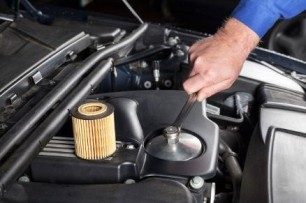
Complete guide on when to change car filters
The most commonly overlooked part of car servicing is changing the filters regularly. This task is a big mystery for many as to when is the right time to change a car filter and how to do it.
Timely change and maintenance of your car filters help optimise the motor parts' functionality and allow them to function efficiently. However, you need not be a mechanical whiz to notice the signs of when to change your car filters. This blog aims to help you understand the signs or hints your car gives indicating an immediate filter change.
1. Cabin filter:
A cabin filter is used to clean the inside of your car. This is done using air conditioning or heating vents. Clean air inside the vehicle is imperative for personal health and for preventing allergies and other respiratory problems. Unclean or damaged filters can block the airflow and cause visibility issues when defogging the windows.
Cabin filters must be changed every fifty thousand kilometres. Still, it is best to talk to an expert mechanic or consult the manual for recommended vehicle maintenance. If the air from the vents blows with less force or contains an unpleasant odour, your filters likely need to be changed.
2. Fuel filter:
The fuel filter helps keep dust, rust, and other impurities at bay. By removing the contaminants, this filter ensures the efficiency and performance of the engine. A clogged fuel filter can experience difficulty in the free flow of fuel, so the engine pumps harder than it needs to. It can lead to poor acceleration or a troubled start every time.
It is suggested that the fuel filters must be changed after fifty thousand kilometres. But these criteria often keep changing according to your vehicle's build and brand. If you start noticing decreased power, stalling, difficulty accelerating while going uphill, shuddering movements, and difficulty starting the engine, these are signs of a clogged fuel filter.
3. Air filter:
An air filter in the car is used to prevent insects, sand, debris, and other minute particles from entering the engine. Air filters ensure a good mixture of air and fuel to enhance the engine's performance. The cleaner the air in the engine, the more power the engine has. Good air filters also ensure better combustion, thus reducing fuel consumption. A clogged air filter leads to incomplete combustion and releases impure black smoke from the exhaust.
Air filters can be changed every twenty thousand kilometres. The interval can vary depending on the tracks you choose daily. You should reduce this interval if you drive on dirty or dusty tracks. Decreased mileage, strange noises, less power, black smoke, or strong fuel smell are symptoms of clogged air filters. You should rectify these issues immediately upon notice.
4. Oil filter:
The oil filter ensures continuous oil flow and removes dirt, impure oils, and metal particles in motor oil without hindering lubrication. All moving parts, such as the rods, shaft, etc., are protected from damage if the oil filter functions well. Change the oil filters between ten thousand kilometres to fifteen thousand kilometres.
Poor performance, metallic noises, and low oil pressure are some signs indicating a damaged oil filter.
We have discussed everything you need to know about the various car filters and their purpose. Proper maintenance and servicing are essential to keep your car in good condition. To ensure the financial coverage for your vehicle's care, always look for insurance options provided by the best car insurance company in India.
Click HERE to know more about the best car insurance company in India.
Disclaimer: The information provided above is for illustrative purposes only. To get more details, please refer to policy wordings and prospectus before purchasing a policy.

Driving through the snow? Here's what you need to know
Choosing to go for a drive while it's snowing outside may sound like an unusual option. So, ask yourself, "Have you prepared your car ahead of time?" A winter-ready vehicle should have enough tyre tread and air pressure, a vast tank of petrol, and a clean windshield.
Give yourself extra time to arrive at your location to avoid collisions. Do not take your hands off the wheel. Also, remember to get insurance from your choice of a motor insurance company and add a layer of protection to your car.
Keep in mind the following to lead a safer journey while driving through the snow.
1. Pay attention to the lights flashing:
If you turn and notice a flashing orange light, this is the stability-control system warning you that the vehicle is about to slip off the road. Ease off the accelerator until no more power is applied; this helps the automobile recover grip. Also, while making tight bends in town on icy or slushy roadways, do not accelerate rapidly. Always increase the throttle with steady momentum, so nothing unexpected occurs.
2. Install winter tyres:
This isn't a piece of driving advice; it's a survival suggestion. Winter tyres provide significantly greater grip in snow, sleet, and ice than even the most extraordinary all-season tyres. Installing a set of four winter tyres is the most intelligent thing you can do to boost your safety.
3. Handle the skids:
Skids, even large ones, are manageable, and you may quickly regain control of the vehicle. Firstly, don't panic—and don't slam the brakes. Instead, reduce your speed to avoid a front-wheel skid, which occurs when the front tyres lose traction, and the vehicle rotates in a broader arc than expected. In the event of a rear-wheel skid, swiftly move the steering in the same direction as the rear tyres are sliding. Keep your foot off the pedals. Steer back in the original direction when the rear wheels get a grip.
4. Drive extremely smooth:
The key component of driving safely in the snow is to be smooth with steering, acceleration, and braking. Why? Rapid control motions quickly unstick tyres with a fragile grip on the slick road. So every rotation of the wheel, a press of the brake, and movement of the accelerator must be careful, calm, and progressive.
5. Carry the necessary supplies:
Pack a snow shovel in your vehicle before you go, along with a bag of salt and a tow rope. The tow hook is located beneath the rear cargo floor, next to the spare tyre. Due to heavy snowfall, roads get severely affected, and tyres tend to get jammed, making the car halt.
Remember that your best chance for driving this winter is to ensure that your tyres sustain winter conditions. Snow can hamper the health of your car and make your journey troublesome. Stay adaptable, as it's best to pull over someplace to wait out the weather. Also, prioritise purchasing the ideal insurance plan from the best motor insurance company by considering your requirements and the benefits you can get from it.
Click HERE to head to the best motor insurance company.
Disclaimer: The information provided above is for illustrative purposes only. To get more details, please refer to policy wordings and prospectus before purchasing a policy.

Here is a list of five things that elders must take care of before planning a road trip
The passion for exploring does not fade with age. Many seniors start planning their post-retirement plans from an early stage. And, travel is one of the most exciting adventures they wish to do in their old age. After years of providing for their families, they deserve a break to live for themselves. The elderlies should experience the world’s magnificence at their own pace and spend some time enjoying the serenity of nature to rejuvenate their soul.
However, elderly adults should take particular measures before travelling. If you intend to travel with more aged folks or hook them up with a senior road trip group, here are some factors to consider for their security and wellbeing.
1. Health restrictions and physical evaluation:
You can never take too much precaution when it comes to health. It is critical to keep medications available, therefore, ensure they are conveniently accessible. Carry all prescribed medications with you. It is also a brilliant idea to supply over-the-counter medications on hand for various potential requirements.
2. Keep the trips short:
While creating an itinerary, plan the travelling and sightseeing accordingly. Avoid ending up bone-tired journeys. Instead, take frequent breaks while driving so they don’t feel tired. Choose destinations that don’t involve much walking and are ideal for aged people to explore. It is advisable to take frequent halts for the seniors to stretch their bodies and feel refreshed and energetic again.
3. Road conditions:
It is prudent to be aware of road conditions. Damaged roads can be a problem for people who are not used to travelling regularly. Also, keep in mind that older people’s bodies are vulnerable due to low bone density and cannot handle jerks like youngsters. Therefore, maintain a steady speed and avoid rushing.
4. Do not forget to pack the necessities:
You must bring a few basics with you: Warm clothes and any medical equipment such as asthma inhalers, wheelchairs, shawls, and so on. A cushion or blanket will also come in handy. Eating locally accessible food may not be the smartest choice in certain situations. As a result, bringing some of their favourite foods is preferable. But ensure that the food must be less spicy, less oily, easily chewable, and easy to digest.
5. Bring fewer belongings:
When going on a road trip, you want to concentrate on the journey, the magnificence of nature, and the locations you see. Taking valuables will add to your anxiety and reduce the pleasure of the vacation. It also presents unsafe conditions. And anyway, seniors who travel by car should be stress-free!
Follow the above tips carefully to ensure a comfortable trip for the elders. Checking on health and safety is paramount when travelling with aged people. To lean a little more towards the safer side, you must have insurance before planning the road trip. You are also required to invest in motor insurance as it is mandatory for anyone travelling via cars. So, before you start your trip, look for a motor insurance company in India and get your insurance covered. Remember to carry all the required documents with you throughout the journey.
To visit the best motor insurance company in India, click HERE .
Disclaimer: The information provided above is for illustrative purposes only. To get more details, please refer to policy wordings and prospectus before purchasing a policy.

Here is the special diet to keep you fit this monsoon
India is a country of diversity. Be its languages, cultures, traditions, customs, food, beverages, clothes, etc., the country provides you with a wide range of flavours linking back to the history and development of the region over time. The food palette in our country changes every hundred kilometres. And adding to the list are seasons. For every season, there are particular dos and don’ts regarding food.
The onset of the monsoon season creates a soothing vibe. The luring downpour, clouds, gentle winds, and food make the monsoon a season of endless cheerful moments. Cravings for fritters and tea are synonymous with monsoons. While oily and fried food gets our taste buds, it is also essential to be mindful about what you eat, especially during the monsoons.
This blog will discuss the dietary restrictions you must maintain to ensure you don’t fall sick. Here is the special diet to keep you fit this monsoon.
1. Oily food is a strict no:
While we all enjoy pakoras with tea in the lovely monsoon drizzles, it is not suitable for your heart and digestive system. Consuming too much oil can make it difficult for your digestive system to break down into energy-providing carbohydrates.
The excess fat can eventually be deposited in your body and, over time, cause pressure on your nerves which helps in circulating the blood. This makes it difficult for your heart to supply blood to the whole body. It can lead to severe health and heart risks.
2. Say no to spicy food:
Just like oily food, spicy food is not very gut-friendly either. It can cause indigestion due to excessive spice consumption and lead to problems like acidity, stomach ache, burns, diarrhoea, etc. Spicy food can severely impact your metabolism, slowing down the stomach’s ability to absorb all the nutrients from the food you eat.
3. Confused about leafy vegetables:
Doctors, nutritionists, and dieticians spend their entire lifetime advising their patients and clients to consume leafy greens. But you should avoid them during the monsoons. Why? The leaf moisture can cause it to go wrong, and the humidity makes germ infestation much more convenient and accessible.
If consumed in such a state, it can have severe health consequences. Apart from this, all the pesticides and insecticides might also cause some trouble due to the rain. So, to sum up, avoid eating leafy greens in the rainy season. If you still wish to consume them, ensure to wash and boil them thoroughly before cooking.
4. Be watchful about water:
If you or someone in your family consume water directly from the tap or the borewell, STOP. It would be best if you were careful about the water you drink. And stay even more watchful during the rainy season as the water might get contaminated and become unfit for consumption.
Drinking contaminated water poses high chances of diarrhoea, stomach aches, typhoid, cholera, stomach infections, and much more. Install a proper and home-friendly water treatment plant to ensure that the water you and your loved ones consume is safe to drink.
Other dietary tips include consuming tons of fluids and tea with special spices and herbs to help with sweating and the enormous humidity levels, which can cause dehydration and loss of nutrients. Consume spices like cardamom, ginger, turmeric, and cinnamon to help boost your immunity levels and combat any health issues (for example, cold and flu). Eating freshly cooked foods is another way to ensure that your diet contains all the nutrition you need during the monsoons.
Follow these tips and keep a check on your health without falling sick or suffering from any health conditions. Younger individuals tend to recover quickly due to a high metabolism rate compared to the elderly. So, it would be wise for you to purchase the best health insurance in India for parents after browsing through all the available options in the market. Find the one which caters to your needs in the best ways. Keep your parents’ health a priority.
Click HERE to know more about the best health insurance in India for parents.
Disclaimer: The information provided above is for illustrative purposes only. To get more details, please refer to policy wordings and prospectus before purchasing a policy.

Here are a few useful ways you can adjust your bike's idling by yourself
If you’re seeing this, you probably are wondering about a phrase that both seasoned motorcyclists and motorcycle marketers have mentioned several times: idling. What precisely is idling, and how can you adjust it by yourself? Let’s understand this.
What is idling?
Idling occurs when your motorbike engine is on and working, but you are not moving forward. Idling may also be defined as pausing at a stoplight with the motorcycle still functioning but not going forward. When your motorbike is idling, it is the period between igniting it and riding it.
Let’s dig deep into all you should know about idling.
How can we change the idle speed of an engine?
We try turning an alteration to raise or reduce the engine idle speed on turbocharged automobiles. Bikes manufactured now do not have such a feature. The idle speed of an engine is a pre-programmed function. We cannot directly modify the motor idle speed on the latest bikes. If the motor idle speed has to be adjusted, please refer to your bike’s manual to understand the recommended RPM first. The recommended idle speed of a bike depends on the type of engine and air to fuel ratio.
Does your bike need idling?
The most common purpose for idling a motorcycle is to “heat up” the engine. It helps in maintaining the engine properly circulated with gasoline, resulting in smooth riding. This is particularly frequent during the winter and in generally chilly areas all year. The idle period also varies according to the age of the motorbike. Older motorcycles idle for minutes, while current bikes idle for just a few seconds.
Yet another reason you should idle your motorbikes is that it is not always practical to switch the motor on and off when they are caught in traffic or need to get off their bike for a brief time.
How to adjust your bike’s idle?
It’s relatively simple if you do it right. If you have an older carbureted motorbike or an early fuel-injected motorcycle design, just use the idle speed adjusting screw. Twist and turn the screw slowly clockwise to raise RPM and anticlockwise to reduce RPM. This should be done when the engine has reached the average operating temperature. You may stop the idling once you feel that the engine has reached the desired RPM.
To summarise, idling on a motorbike occurs when the motor is left operating; however, the bike is not in motion. Idling is helpful to generate more RPM and attain more thrust. The motorists who desire constant power, usually get idling done or improved for a better experience.
Last but not least, being a motor-savvy person doesn't qualify you with all the protection for your bike. Instead, having a robust two wheeler insurance plan can help you overcome financial risks getting to your pockets. Numerous insurance companies offer two wheeler insurance online in India. Choose a suitable one and invest in it to ensure optimum financial security at the time of emergencies.
To browse two wheeler insurance online India, click HERE .
Disclaimer: The information provided above is for illustrative purposes only. To get more details, please refer to policy wordings and prospectus before purchasing a policy.

Visit these top stargazing sites in India to spend memorable nights
Who hasn’t desired to spend a night beneath the stars? The beautiful sky appears to be a canvas painted with countless twinkling stars. Stargazing gains a special place in the bucket list of most travellers. And rightly so. Who wouldn’t want to see the starry night while enjoying a mesmerising atmosphere? If you are travelling with a group, a random jam session under the open starlit sky will melt your heart. It’s a sight to behold.
Where can you find such places with stars lined up? Don’t worry. We can help you plan your next trip to the sites that offer you this jaw-dropping experience. Let’s get started.
1. Rann of Kutch, Gujarat:
Rann of Kutch in Gujarat is one of the largest salt marshlands on Earth. It offers the best crisp and clear night sky views. It encapsulates almost six magnitudes of stars, easily visible to the naked eye. All in all, this place is heaven in India for all the astrophile and stargazers. The time from October to February is considered the best to visit these marshlands.
2. Pangong Tso Lake, Ladakh:
Ladakh is a dream destination for the majority of travellers. And now, the iconic Pangong Tso Lake is an even more compelling reason that adds a feather to the hat. It is regarded as one of the best stargazing views in the entire country.
The lake is situated at an elevation of 4,225 meters. The starry sky outlines enhance the mesmerising night view from this lake. Trekking opportunities are available where you can set up camps and experience the view of the gazillion stars. Visiting Pangong Tso Lake in Ladakh from May to September would be the wisest choice.
3. Coorg, Karnataka:
Coorg is one of the most beautiful hill stations one must visit while touring the state of Karnataka. The waterfalls, coffee gardens and the lush green views can calm your soul and give you the peace you crave in the hustle of city life.
Giving you glimpses of mountain peaks and starry sky outlines, Coorg offers the tourists and adventurers multiple opportunities to camp in the forests where the tall trees form beautiful canopies, and the stars shine through. And if you are solely visiting Coorg for stargazing, make sure you plan your trip from October to March.
4. Spiti valley, Himachal Pradesh:
Himachal Pradesh offers some of the most beautiful views and tourist locations in India. And the high altitude makes it a perfect spot for experiencing the serene night sky views and capturing the beauty of snow-capped peaks.
At an elevation of 4270 meters, Kibbar or Kyibar in Spiti valley is a well-known point in Himachal Pradesh, specifically for stargazing. The best time to visit Spiti Valley is in the winter.
Various other locations in India offer stargazing opportunities, such as Nubra Valley in Ladakh, Sonmarg in Jammu, and Kashmir, Kashid Beach in Maharashtra, Jaisalmer in Rajasthan, and Shaheed Dweep or Neil Island in Andaman and Nicobar Islands, etc.
We hope this list will help you plan your next trip-solo or with dear ones to the sites where stars bring energy into life. Spend memorable nights and gasp at the wonders space offers.
As you consider travelling, how about getting general insurance for your travel? You deserve some relaxing time where you do not have to worry about sudden, unprecedented circumstances that can ruin your trip. And now, explore your options and get the best online general insurance which would cover your travel insurance in the best ways possible.
Click HERE to know more about the benefits of online general insurance.
Disclaimer: The information provided above is for illustrative purposes only. To get more details, please refer to policy wordings and prospectus before purchasing a policy.

Here are a few tips for maintaining the optimum tyre pressure in two-wheelers
Tyres are the least talked about part of a bike and usually get tossed to the side. But it is crucial to check your two-wheeler’s tyres regularly because they go through a lot. Whether you are riding on a metal road or rough surfaces —they have to be able to hold their shape. But, quick-fix solutions like tyre pressure can do so much for your tyres.
Imagine riding your bike, and you realise there's a flat tyre. This can interrupt your ride due to the waste of time. Also, sudden faults in the tyres are potential risks to the rider's life and even damage the bike.
Tips for maintaining the optimum tyre pressure:
Taking care of your bike's tyres isn't a big task. If you remain a little attentive, it's possible to avoid any breakdown-related issues. However, a big problem that one needs to avoid is the accident and financial worries attached to it. To deal with these, consider buying insurance plans. Getting a 2 wheeler insurance policy is like buying a shield for your two-wheeler.
And luckily, there are four tips to help you avoid tyre-related accidents while riding your bike. Maintaining optimum tyre pressure is crucial to minimise mishaps on the road.
1. Are your tyres correctly positioned:
When checking your bike, you should always check the tyres to see if they are in the correct position. Also, check for any punctures as sharp objects such as glass can hamper the quality of tyres. Make sure to move the tyre forward and back to check the whole surface thoroughly.
2. Check the tyre pressure:
One of the best ways to protect your two-wheeler is to examine the air pressure. When inflating your tyres, you can extend their lifespan and improve handling. Make sure to check the air pressure before every ride. As the bike heats up, air pressure can change, and it is essential to keep track of the air pressure level for your bike.
3. Recommended air pressure:
Keeping your motorcycle's tyres at the recommended air pressure is essential. Ask the service centre or check your bike manual to know the recommended tyre pressure, and ensure you maintain it. Also, to avoid sliding on wet roads, make sure your tyres are in good shape. Check the treads for wear and make sure they are not bald. If there is a decrease in an inch or quarter bald track, you should consider replacing the tyres.
4. Avoid maximum inflation:
When filling your tyre with air, be mindful that the sidewall states the maximum pressure. The recommended amount is always lower than the maximum. Excessive air filling can cause considerable damage to the tyres and increase the probability of tyre burst, creating a life-threatening situation for the rider and fellow drivers around him.
With an increasing number of road accidents and fatalities in India, 2 wheeler owners must be well-protected from any unfortunate mishaps. So, make sure you get a 2 wheeler insurance plan, drive safely, and stress-free. Also, use the tips mentioned above to take the best care of your bike’s tyres and leave no scope for negligence.
Click HERE to buy the best 2 wheeler insurance.
Disclaimer: The information provided above is for illustrative purposes only. To get more details, please refer to policy wordings and prospectus before purchasing a policy.

Let's understand how a central locking system impacts a car's safety
Since its implementation, the central locking system has become one of the essential safety features in a car. It's a combination of electronic and mechanical components that only allow access to authorised individuals.
Earlier, central locking systems in automobiles used a compressed air mechanism with separate vacuum reservoirs that triggered the locks of all four doors when the key was inserted and turned in a lock. Today's systems use wireless or infrared control, which can activate the mechanism from a distance.
In today's post, we will look at the functioning of the central locking system and how it impacts a car's safety.
The four main components of a central locking system.
1. Actuator:
An actuator is an electric motor that controls the car's central locking system. This component is built into the door and consists of a combination of mechanical latches.
2. Transponder:
It is a system built into the key's bow that determines whether the correct key is being used. As the key approaches the ignition lock, the transponder code is read. When the correct code is scanned, the electronic immobiliser sends a signal to the engine to permit it.
3. Remote Controller:
Remote controllers are increasingly being used in all cars. They are designed to replace the function of the key systems completely. The remote control includes electronic circuitry that sends coded instructions via infrared rays to the receiver located inside the vehicle to permit a keyless entry.
4. Start and stop system:
Unlike traditional ways, which required a key to be inserted into the ignition lock to start the car, engines are now being started using keyless systems where a transmitter – also serving as the central locking controller – is scanned into a reader in the vehicle. Later, the engine is started by pressing a button.
Safety advantages of central locking systems:
• The driver has better control over all the doors. The central locking system allows drivers to lock or unlock all four doors by pressing a single button. This is very convenient since the driver doesn't have to worry about unlocked doors while the car is in motion.
• Since the code is digitally encrypted, it is tough to make duplicate keys.
• If your key is ever stolen, you can simply remove the access right from the software on your phone. It connects with the car's digital lock and terminates access rights. Some automobile manufacturers even allow removing the access remotely.
• In more sophisticated systems, the car's door automatically locks itself after reaching a specific speed limit. As a result, no one, especially toddlers, can open the door by mistake —this helps avoid serious accidents.
• In case of an accident, a central locking system smartly unlocks the door so that help can reach you without having to break anything.
What else assists post-car accidents? Comprehensive car insurance. You can claim all the expenses involved in repairing and servicing your car under your car insurance policy's scope
A central locking system is essential for a family vehicle in practical usage. The ease of access and security that it provides make life easier for all automobile owners. Having a central locking system in your car provides extra security and brings down your car insurance premium. All the reputed car insurance companies encourage car owners to adopt convenient and safe practices. So, go for a central locking system in your car to enjoy a wide array of benefits and deals that you shouldn't be missed out on.
Click HERE to buy car insurance in hassle-free steps.
Disclaimer: The information provided above is for illustrative purposes only. To get more details, please refer to policy wordings and prospectus before purchasing a policy.
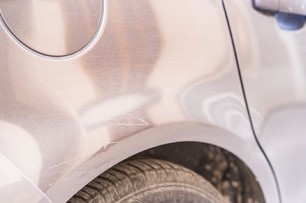
Let's talk about car fenders and how they are distinct from regular bumpers
As a car owner or enthusiast, it's prudent to educate yourself about vehicle parts. The most confusing of them are fenders and bumpers that keep your car safe. You may have heard the term "fender-bender" from drivers when they get into a car accident and wondered, "What does it mean?" Fender and bumper damages refer to physical damages to your cars, such as dents. If you have recently bought a new car, this article will help you understand the difference between these terms.
However, before diving into fender vs. bumper issues in detail, we advise you to buy new car insurance to ensure your vehicle gets adequate protection against accidental damages and a hassle-free repair and servicing.
What is a car fender?
The fender has been a part of automobiles for a long time now. It is the part of the car that covers the wheels. The section where the fender goes is popularly called the "quarter panel." The quarter panel is the rounded corner of the car that protects the wheels.
In older vehicles, the fender used to be more pronounced. Whereas nowadays, with the modernisation of the structural design of cars, fenders have taken a flatter shape, complementing the car's frame.
Car fenders are an essential accessory for your car, as they play a crucial role in keeping the vehicle and its occupants safe. As the car moves, the tires grab and throw anything that comes in its path, such as small rocks, mud, water, etc. Fenders provide resistance against wind and roadside debris while protecting surrounding areas and nearby people from projectiles from your tyres.
What is a car bumper?
A car bumper has a "bumping" function, which means it acts as a protective perimeter to the body of your car and prevents other objects or vehicles from impacting it. In simple words, it reduces the impact of a collision by absorbing minor shocks. You can find bumpers in two places in your car, one in the front and another in the back.
Car bumpers may not prove very beneficial in protecting your vehicle from high-speed crashes, but they are quite valuable for safety during minor accidents. They also serve to protect pedestrians from severe injury in case of a collision.
Just like fenders, bumpers have also reduced in their size. Previously, they were mainly used for decorative purposes, and people came up with new stylistic designs. However, they have gained quite much attention in the automobile industry in recent years. They are no longer considered decorative items but essential for safety purposes. The effectiveness of rear and front bumpers has saved the lives of numerous car accident victims.
Several car owners struggle to understand the parts of their vehicle, making it challenging to communicate with the mechanics about car troubles. However, educating yourself about them can make all the difference when it comes to the proper maintenance of your vehicle.
Similarly, think of investing in the security of your car and buying new car insurance to ease the concerns that can empty your pockets and leave you frustrated. Understand your role as a responsible owner and do whatever is necessary to keep your four-wheeled companion safe.
Click HERE to buy new car insurance with the best benefits.
Disclaimer: The information provided above is for illustrative purposes only. To get more details, please refer to policy wordings and prospectus before purchasing a policy.
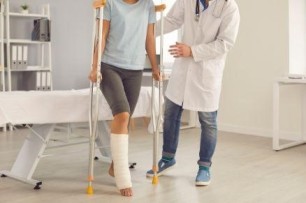
Useful tips to make healing and recovery of fractures fast and less painful
Of the many injuries we are familiar with, a fracture seems to be the most painful. Not only it is excruciatingly painful, but it also takes a long time to heal. A fracture can slow you down, even for basic day-to-day chores. The healing is given ample time to ensure that the bones are correctly aligned. But having said that, waiting for your fracture to heal can be tedious.
The healing of a fracture covers three main stages: Inflammatory, reparative, and remodelling. During the inflammatory stage, special cells assemble in the injured area and cause redness and swelling. This is an indication to the body to stop using the affected area. The first bridge between the broken bones is made here as a blood clot or hematoma.
During the reparative stage, a soft bone or callus takes the position of the blood clot and holds the broken bones together. This soft callus is not strong enough to handle weight and movement. Over the subsequent weeks, the callus becomes stronger and can handle movement.
During the final stage, the normal bone replaces the callus entirely, and over a few weeks, the bone is back to its original condition.
In this article, we will look at the few things we can do to accelerate the speed of recovery.
1. Restricting movement:
The more the movement, the longer it takes for the bones to heal. To heal properly and quickly, the best method is immobilisation. Castes and plasters are the most common ways of giving your bone the support it requires while also restricting any painful movement.
If the fracture is more severe, the doctors might rely on screws, plates, or wires to keep the bone fragments intact. Always remember to consult a doctor in case of pain or discomfort.
2. Improving food habits:
A weak bone can take longer to heal. Vitamins and minerals are vital components of a healthy body. The essential component for bone development is calcium. Include food items such as milk, cheese, and other dairy products that contain high amounts of calcium that your bones require. For your bones to absorb maximum calcium from these food items, your body also needs Vitamin D. Vitamin D helps the bones effectively absorb the calcium from various food sources.
Avoid smoking and alcohol consumption. People who indulge in these habits experience slower and more painful healing. Avoid food with high sugar and salt content. Excessive sodium or sugar removes calcium from your body and significantly slows down the repair of broken bones.
3. Physical therapy:
Physiotherapy can work wonders for bone repair. Blood flow is an essential part of bone healing. Therapy under the guidance of a physiotherapist can help you regain strength and a greater range of motion. There are also some exercises that you can occasionally do. This ensures that your muscles and bones do not get stiff over time while in a cast.
4. Post care:
After the cast is taken off, try not to test the broken bone. Do not put a lot of pressure on the bone to ensure if your bone has healed or not. As tempting as it may seem, give your bones time to adapt to the surroundings without having external support.
These are a few valuable tips you can follow if you want a faster recovery of broken bones. All the methods mentioned above are simple practices you can incorporate into your daily routine. Healthy eating habits, regular exercising, and timely body check-up are essential to maintaining an overall healthy lifestyle.
This article is also a reminder for you to do your health insurance policy renewal. Accidents can be expensive, with the medical bills skyrocketing. Hence timely health insurance policy renewal is non-negotiable to avoid stress due to health problems.
Click HERE for health insurance policy renewal.
Disclaimer: The information provided above is for illustrative purposes only. To get more details, please refer to policy wordings and prospectus before purchasing a policy.

Important tips for selecting the best engine oil for your car
Regular car maintenance is a worthwhile investment since it allows a vehicle to operate more effectively and safely. Moreover, it helps avoid the need for expensive repairs in the future. Changing the engine oil improves the performance of your engine by spreading heat and keeping an appropriate temperature in the combustion chamber. In addition, you must remember that a well-maintained car helps you secure a car insurance renewal easily with added advantages like no claim bonus.
It is critical to use the proper lubricant for your vehicle to achieve optimal engine performance. There are many types of car engine oils available, and determining which one is best for your car is not an easy task.
How do you know which engine oil is best for your car? Here are the things you must consider.
1. Oil Viscosity:
When it comes to engine lubricant or engine oil, viscosity is a measurement of the thickness of the oil and the resistance to flowing. It is necessary to match the oil viscosity to the ambient temperature since thick oil does not agitate around the engine. Optimal viscous lubricant promotes energy efficiency while also preventing friction between components. Look at the care guide for your car's oil needs.
2. Analyse the previous engine oil's performance:
One of the essential things you should do when changing your engine's oil is to assess how well the prior engine oil performed. Changing your engine oil at specified intervals is vital to ensure smooth performance and safety.
Suppose the previous engine oil was refined, and there was no need for engine maintenance. In that case, you can use the same oil and brand without hesitation. It's best to choose an oil with the same manufacturer certifications as the one specified in your car manual if you can't find the one you need.
3. Type of car you have:
The type of vehicle is the most crucial consideration when selecting engine oil. There are several important factors to consider when buying engine oil for your car, including whether it is old or new, if it runs on gasoline or diesel, and if it has a high-performance engine or not, the brand, the series, and so on.
4. Follow the advice of the manufacturer:
It is suggested to follow the manufacturer's guidelines for engine oil changes in your vehicle. The importance of these guidelines becomes much more apparent when you own a new car that is still covered by the manufacturer's warranty. Use only the engine oil recommended by the manufacturer during this period because using a different oil could invalidate the warranty and affect your car insurance renewal.
5. Environmental factors:
The choice of engine oil is influenced by whether or not the vehicle is subjected to high-temperature conditions. Choosing an engine oil that can handle low and high temperatures is essential when driving in harsh climates.
It is critical to choose the appropriate engine oil for your engine to run at peak performance. Furthermore, the proper engine oil will improve the engine's performance and the car's overall fuel efficiency.
It is highly suggested that car insurance renewal be done before the due date to receive uninterrupted insurance benefits for a prolonged time. So consider these five factors the next time you're shopping for engine oil to get the best results.
Click HERE to get your car insurance renewal done before expiry.
Disclaimer: The information provided above is for illustrative purposes only. To get more details, please refer to policy wordings and prospectus before purchasing a policy.

How to ensure maximum visibility by adjusting your car mirrors efficiently
Driving is a predominantly visual activity. Only learning the controls of the car is not enough. Good visualisation is one of the essential skills to develop when driving a car. Although you must concentrate on the road ahead, it is crucial to have a clear view of the sides and back of the car as well. Adjusting the side and rearview mirrors is vital to ensure a well-rounded view while driving.
Further, you should rely on emergency financial help by investing in dependable motor insurance India plans in case of road accidents, as it is always better to be safe than sorry.
All cars have blind spots; therefore, adjusting your rearview and side mirrors to the optimum can ensure maximum visibility and safety on the road. In this article, we tell you how to use your car mirrors efficiently and avoid the chances of accidents while driving.
1. Rearview mirror:
The rearview mirror, positioned next to the driver’s seat slightly above their eye level, is used to see the road behind and if any cars are approaching. The driver must adjust the rearview as per their height and comfort as soon as they get into the driver’s seat.
To adjust the angle of the mirror, sit up straight in a comfortable position, hold your head still, look into the rearview and shift it until the back or rear window is entirely visible in the mirror. Do this to avoid any blind spots. If more than one person is driving the same car, make sure to check the rearview mirror every time you get into the driving seat and readjust it to the best angle, in case it has been shifted as per another driver’s comfort.
When driving at night, flip the tab at the bottom of the rearview mirror that helps dim the light reflected by the headlights of the cars approaching behind you that may strain or blind you. In addition, some advanced car models enter and exit night mode to aid your visualisation.
2. Side mirrors:
Every car has a single side mirror on the left and right sides of the vehicle, respectively. As they are located outside of the car, it can be difficult to manoeuver them from inside. While many modern car models have levers or buttons that help adjust the side mirrors from the inside, some of them may not.
If your car does not have a lever or buttons to adjust the side mirrors, make sure to do so manually, right after you adjust the rearview mirror. Sit upright in the driver’s seat, first glance to one side, and adjust that mirror to an angle that helps reflect the side of the road. Shift it to a wide angle to get a comprehensive view of the side of the road. Repeat the same method for the mirror on the other side. If you have a lever or button inside the car, angle the side mirrors using it. The side mirror should provide a wide sideways view in just a simple glance.
The pro tip is to adjust the side mirrors to an angle that allows you to see right from the side of the road to the very back, including the approaching car, to maintain a safe distance.
Following these few tips to adjust the car mirrors can vastly improve your visualisation and assist you considerably while driving. It leaves very little room for errors or accidents. Apart from angling the mirrors, you must also check the wheel alignment, tyre pressure, oil levels, acceleration, and brake control to ensure safety before hitting the road.
Also, prioritise investing in motor insurance India plans and get the perks of financial coverage in case of loss or damages during accidents. Add value to your possession and get the best returns with assured safety.
Click HERE to know more about motor insurance India plans.
Disclaimer: The information provided above is for illustrative purposes only. To get more details, please refer to policy wordings and prospectus before purchasing a policy.

How mice threaten your bike and how you can prevent it
Indoor rodent infestations may have significantly reduced over the years; however, they still pose a threat outdoors. While we hear several stories about the damage caused by rodents and insect infestations in cars, we rarely hear about how badly they can damage two-wheelers.
Rodents, particularly mice and rats, are primarily attracted to areas where they can find ample warmth and hide. For them, bikes that have been stored away in garages for the long term make a perfect home. Although these mice usually take shelter in cars, bikes are a perfect warm spot for them, specifically in the winter months.
What are the threats caused to your bike by mice?
If you think rust is the worst thing that can harm your bike, you may be wrong. Mice and other such rodents can be far more damaging to your two-wheeler. From chewing on bike parts and wiring to building nests inside your engine, mice can cause terrible damage.
Mice are quick to chew into various parts of the bike, especially wiring. This can cause the engine and other parts to fail and is very difficult to fix. These damages incur high costs for the maintenance of your bike. In addition, it can be challenging to reach and repair the internal parts of the bike that have been damaged, causing unfavourable wear and tear in the process.
The nests created in internal parts of the bike are another major issue. Mice store food and other materials in the nests, which can clog the engine. They carry diseases and germs that can be detrimental to your health. If the nest is built near the air filter, there is a considerable danger of expelling rodent excrement every time you start the bike, leading to the spread of airborne viruses.
How to keep mice away?
Whether you are trying to get rid of the mice or are simply taking preventive measures to protect your vehicle, these few tips will go a long way in avoiding any more damage caused by rodents:
1. Mice try to find places that humans or other animals don’t regularly use. A stored bike in the garage or outdoors is one such place. The easiest thing to prevent this is to take the bike out for a ride frequently.
2. A simple mouse trap can help catch the ones that may be inside your vehicle. Keep the bike in a shed or enclosed area, set enough mouse traps around and underneath the bike, and check after a couple of days.
3. You can find many mice or rodent repellent sprays and medicines in local stores or online. Spraying these all over the bike will help chase away all the mice dwelling in and around the two-wheeler and prevent any more rodents from coming near it.
4. Block all mouse holes or hiding places in the garage where you store your bike. Making it a rodent-free zone is crucial. Avoid parking the bike in forested areas or lands with tall grass to avoid any future infestation.
5. Mice have a strong sense of smell and can be highly affected by it. Applying peppermint oil on tiny buds of cotton and placing them in various corners of the vehicle can help drive them away.
These tips may not undo all the damage caused to your vehicle, but it’s always good to be aware. So, be wise enough to have bike insurance so that you can recover the damage caused by mice. Also, if your bike insurance plan covers non-collision damages, you can easily file a claim.
Click HERE to get the best deals on bike insurance.
Disclaimer: The information provided above is for illustrative purposes only. To get more details, please refer to policy wordings and prospectus before purchasing a policy.

Plan to enrol your kids in these exciting activities and make the monsoon season enjoyable
The onset of monsoon is a gift for humans, animals, and plants. The lush greenery, the sweet smell of moist soil and the cold winds are a much-needed respite from the scorching summer months. But with all the monsoon goodness comes a set of challenges as well.
Children end up locked inside their houses, hoping for the pouring rain to go away. If you are a parent and you notice your kids growing increasingly impatient, this article is just for you. This article will look at all the activities you can enrol your kids in for a productive and fun monsoon season.
1. Take up a painting class:
Painting is an expressive art form. It is visually stimulating and allows your child to explore different colours and expression mediums. It gives your kids the opportunities to develop creatively and imaginatively.
This gives them the freedom to visualise and metaphorically paint the picture they want. You can help your children navigate the different types of famous artworks for inspiration. Later you can encourage them to join a painting class or workshops and learn to paint their imagination with passion.
2. Sports are always a yes:
In these distressing times of fast-paced technological advancement, we all have fallen sick and are easily prone to multiple health issues. Our bodies have become glued to the smart phones, and all you want is readily available with just one touch and tap of your phone. Rain can put a damper on your kid's physical activities.
Since being outdoors is a complete no-no, kids end up glued to screens. Indoor sport is your solution. Games such as table tennis, carrom, and chess are a few sports kids can play in the comfort of being indoors. Do not let rain be the reason your kids stay away from the fun.
3. Never say no to learning music:
Music, like painting, is again an expressive art form. The sounds stimulate your brain, which can then interpret different versions of tunes and rhythms. They help your child distinguish between various moods and emotions, thus enabling them to create their music. Notice how your kids pick up different notes from the song. Understand and encourage them to pursue various music skills and may also enrol in a music class.
4. We have all heard of abacus:
Abacus and mental maths tips and tricks will always be everyone's favourites. It doesn't harm learning quick tricks to help your child academically in the future. This enables the brain to enhance its analytical and logical power. Abacus classes can help your child improve their logical reasoning and make brisk calculations.
Ask your child if these activities interest them, and let them take the lead while staying indoors during the monsoon season. Parents must always focus on planning experiences to help their children be independent and happy. Don't let the rain wash out the excitement of your children. Monsoon can be fun, too, if activities are planned rightly.
Apart from the skills development, you should consider the plans for keeping the kids protected under any unforeseen circumstances which might arise during different walks of life. One of the best gifts your child can get is insurance benefits. As a parent, you must discuss your options and purchase the best general insurance for catering to your children's needs in the best ways possible.
Refrain from taking drastic decisions while buying general insurance. Take your time, do the best research, understand your child's requirements, and accordingly select the plan that is the best!
Click HERE to learn more about how purchasing general insurance.
Disclaimer: The information provided above is for illustrative purposes only. To get more details, please refer to policy wordings and prospectus before purchasing a policy.


